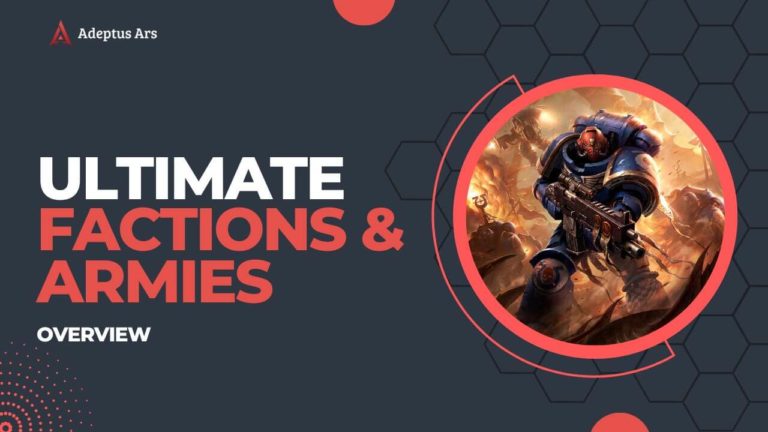The Warhammer 40,000 universe is filled with a wide variety of armies and factions that can appeal to any type of table top player.
In total, there are over 35 different playable races, sub-factions and chapters you can pick from and form your army.
In the guide below, you will learn about the major factions, their background and get an idea of their strengths and weaknesses. With this knowledge, you can make an informed decision about which army to choose on your new path.
So without further ado here’s the complete summary of each W40k faction, in no specific order:
Complete list of Warhammer 40,000 Factions and Armies:
Imperium of Man Faction – Includes 5 Armies:
- Adepta Sororitas: Zealous with faith-based abilities.
- Adeptus Custodes: Elite and extremely durable.
- Adeptus Mechanicus: Technologically advanced with unique weaponry.
- Astra Militarum: Numerous with a variety of units.
- Imperial Knights: Giant walkers with heavy firepower.
Space Marines Faction – Includes 12 Armies, based on various Adeptus Astartes Chapters:
- Dark Angels: Mysterious, driven by their hunt for the Fallen.
- Black Templars: Zealous crusaders with a focus on close combat and vows.
- White Scars: Fast and favoring hit-and-run tactics.
- Deathwatch: Elite alien hunters, specialized in mixed-unit tactics.
- Grey Knights: Psychic warriors specializing in eliminating demonic forces.
- Space Wolves: Feral and close-combat oriented.
- Imperial Fists: Siege masters and defensive specialists.
- Blood Angels: Fierce in melee with a risk of frenzy.
- Iron Hands: Mechanically augmented with a focus on durability.
- Ultramarines: Tactical and adaptable, the quintessential Marines.
- Salamanders: Fire-based weaponry and strong defensive tactics.
- Raven Guard: Stealthy and specialized in surprise assaults.
Chaos Forces Faction – Includes 6 Armies:
- Chaos Space Marines: Corrupted counterparts of Space Marines with access to demonic powers.
- Death Guard: Corrupted Space Marines, Exceptionally durable with a focus on biological warfare.
- World Eaters: Bloodthirsty melee combatants with a rage-fueled fighting style.
- Thousand Sons: Sorcerous Marines, reliant on psychic powers.
- Chaos Daemons: Otherworldly entities associated with each of the 4 Chaos gods.
- Chaos Knights: Dark mirrors of Imperial Knights with chaotic upgrades.
The Xenos Factions – Includes 9 Armies:
- Necrons: Technologically superior faction with self-repairing units.
- Aeldari: Advanced technology and powerful psykers.
- Drukhari: Corrupted Elder, fast, deadly, and thriving on suffering.
- Harlequins: Highly specialized units, designed to be fast, hard-hitting.
- Orks: The army of overwhelming numbers and brute strength.
- Tyranids: Swarming, all-consuming biological horrors.
- T’au Empire: Field an army with advanced ranged combat and battlesuits.
- Genestealer Cults: Derived from the Tyranids, they are subversive, stealthy, and unpredictable.
- Leagues of Votann: The “Space Dwarves” – Stalwart kinbands with resilient technology.
Other Factions and Races you can draw units from and attach to your main army:
- Agents of the Imperium: Varied units with unique operatives such as assassins.
- Asuryani: Eldars, navigating the cosmos in their massive Craftworlds.
- Ynnari: A unified force of Aeldari seeking to harness death itself.
- Dark Mechanicum: Heretics of the Adeptus Mechanicus who have turned to Chaos.
- The Lost and The Damned: A ragtag army of Chaos worshippers, mutants, and renegades.
- The Inquisition: A secretive and powerful organization within the Imperium.
Continue reading to learn more about each faction’s background and the pros and cons they bring on the table top!
The Imperium of Man
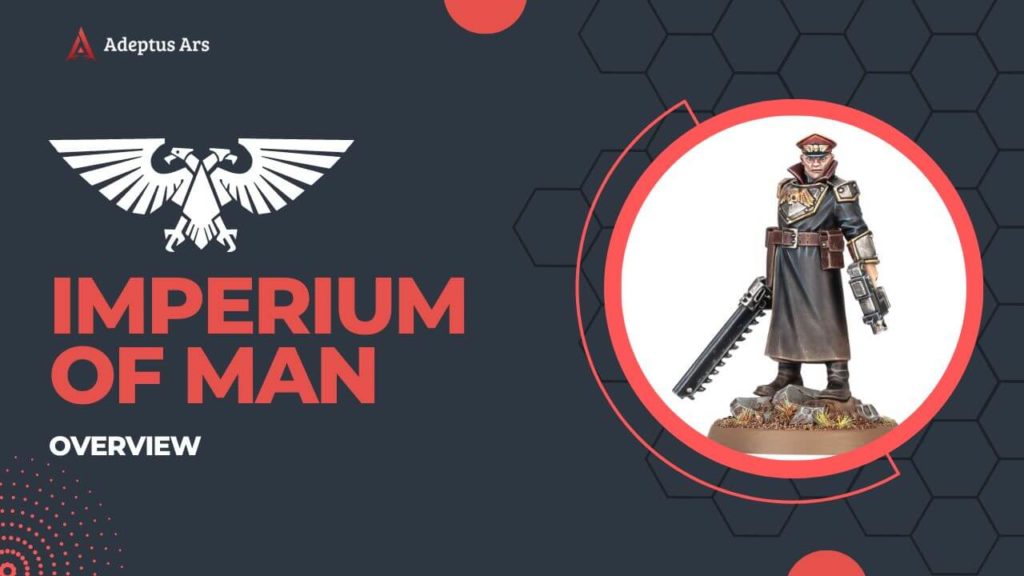
The Imperium of Man is a vast empire that spans the galaxy in the fictional universe of Warhammer 40,000. Its ruler is the Emperor of Mankind, a powerful psychic being who has led humanity for over ten thousand years.
It comprises millions of worlds and trillions of people and is faced with numerous threats from both external and internal forces, including aliens, heretics, mutants, and demons.
To protect itself, the Imperium has established a massive military force that includes several Warhammer 40K factions such as the elite Adeptus Custodes, the Astra Militarum, and the Adepta Sororitas (Sisters of Battle), among others.
The Imperium has a highly structured society that adheres to strict laws and regulations, with a vast bureaucracy controlling it.
Many of its citizens worship the Emperor as a god, and the Imperium’s primary aim is to safeguard humanity and eliminate all threats to its existence.
The Imperium of Man is a militant theocracy that emphasizes faith, discipline, and order.
Related:
Adepta Sororitas or The Sisters of Battle
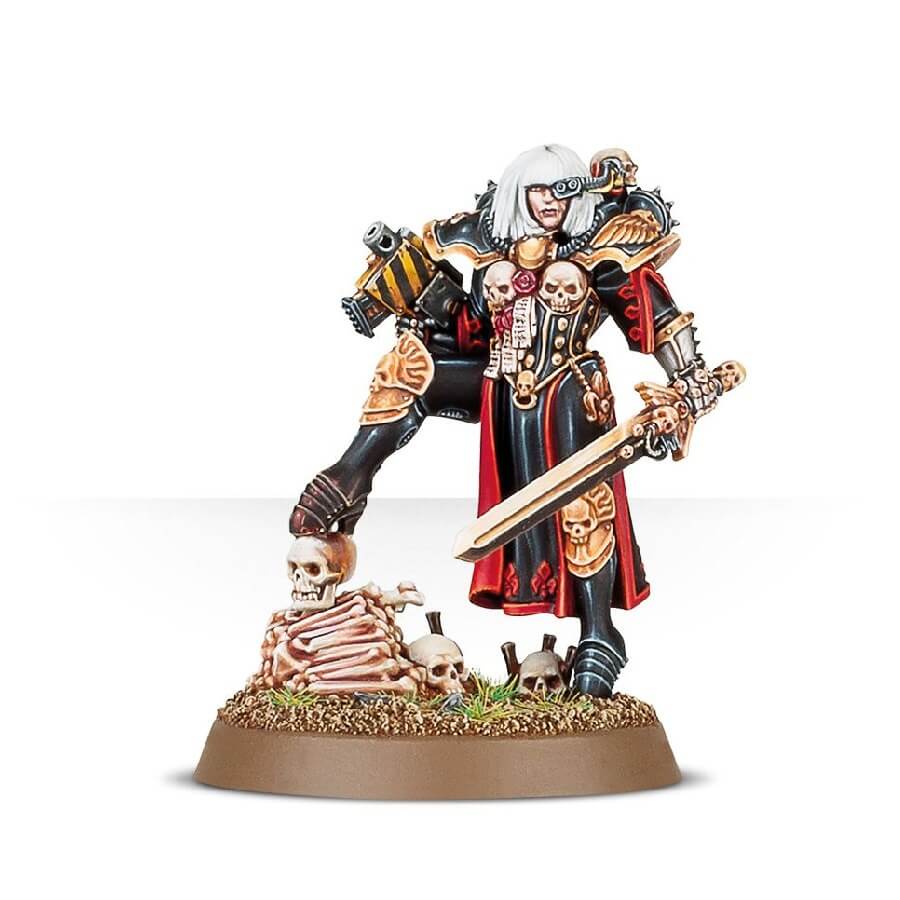
The Adepta Sororitas, also known as the Sisters of Battle, are an all-female faction of the Imperium of Man in Warhammer 40,000.
They are a highly trained and well-equipped army, dedicated to the worship of the Emperor of Mankind and the eradication of all enemies of the Imperium.
Pros and Cons of Playing a Sisters of Battle Army
| Pros | Cons |
|---|---|
| Varied strategies and unit roles. | Higher unit costs. |
| Strong leaders and powerful units. | Vulnerable to strong anti-armor attacks. |
| Unique “Acts of Faith” abilities. | Limited fast movement options. |
| Good at countering psychic abilities. | Challenges in dealing with heavy armor. |
| Can intervene in enemy turns. | Needs careful unit and ability synergy. |
The Adepta Sororitas are a versatile faction, with a wide range of units that excel in close combat and ranged combat.
Their units are also known for their resilience and high leadership, which makes them excellent at holding objectives and weathering enemy fire.
The Sisters of Battle’s devotion is their strength, granting them miraculous abilities on the battlefield, but their specialized focus and the elite nature of their forces present unique challenges.
Related:
Adeptus Mechanicus
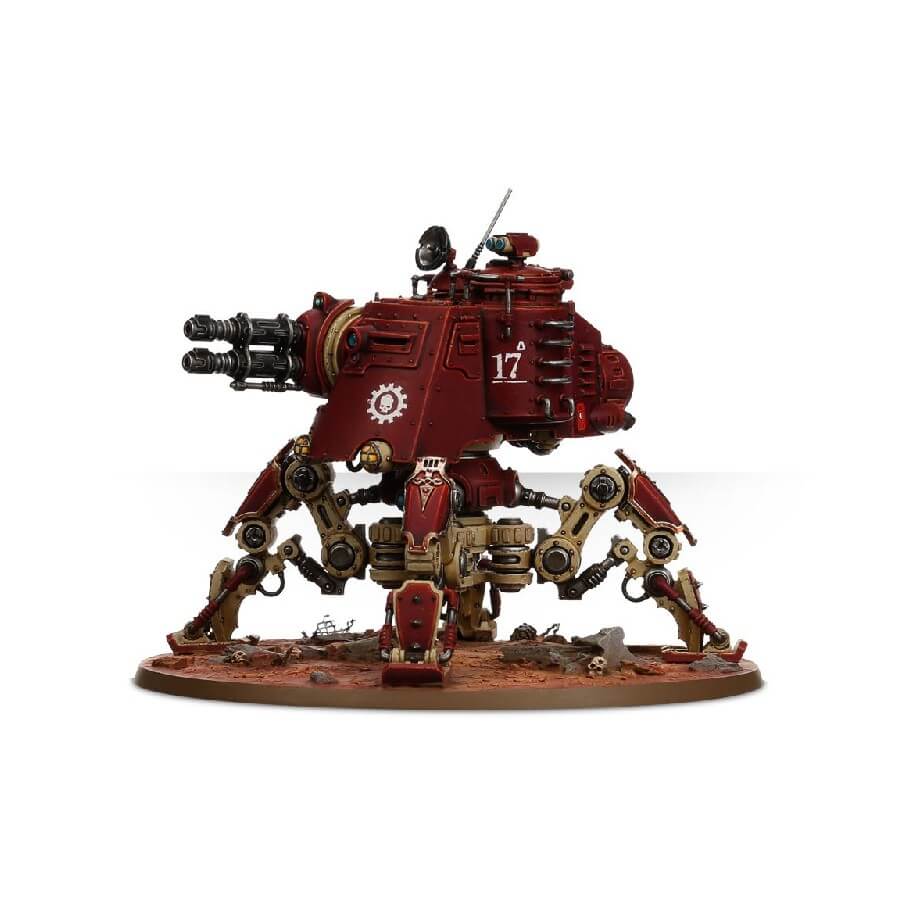
The Adeptus Mechanicus, worshippers of the Omnissiah or Machine God, are the keepers of the Imperium’s technology. Based on Mars, they are independent yet crucial to the Imperium, providing technological and military support.
Their society is a rigid hierarchy of tech-priests, each dedicated to discovering and preserving ancient technology. Notable figures like Belisarius Cawl represent the pinnacle of their inventive and scientific capabilities, pushing the boundaries of forbidden knowledge and technology in their quest for innovation and power.
Their lore is rich with mysteries of the Machine Cult and their unending quest to recover lost technology across the galaxy.
Playing the Adeptus Mechanicus Faction on the Tabletop – Pros and Cons
On the tabletop, Adeptus Mechanicus fields a range of units from Skitarii infantry to mighty Kastelan Robots and Onager Dunecrawlers, each benefiting from enhanced weaponry and tech.
They excel in ranged combat with options for heavy firepower and are known for their ability to adapt with various Canticles of the Omnissiah, enhancing their battlefield effectiveness.
However, they often require strategic positioning and planning due to their sometimes specialized and less mobile units.
Related:
- Complete list of Adeptus Mechanicus Miniatures and Models
- 10th Edition Adeptus Mechanicus Codex
- Ultimate guide to Adeptus Mechanicus Lore
Astra Militarum or The Imperial Guard
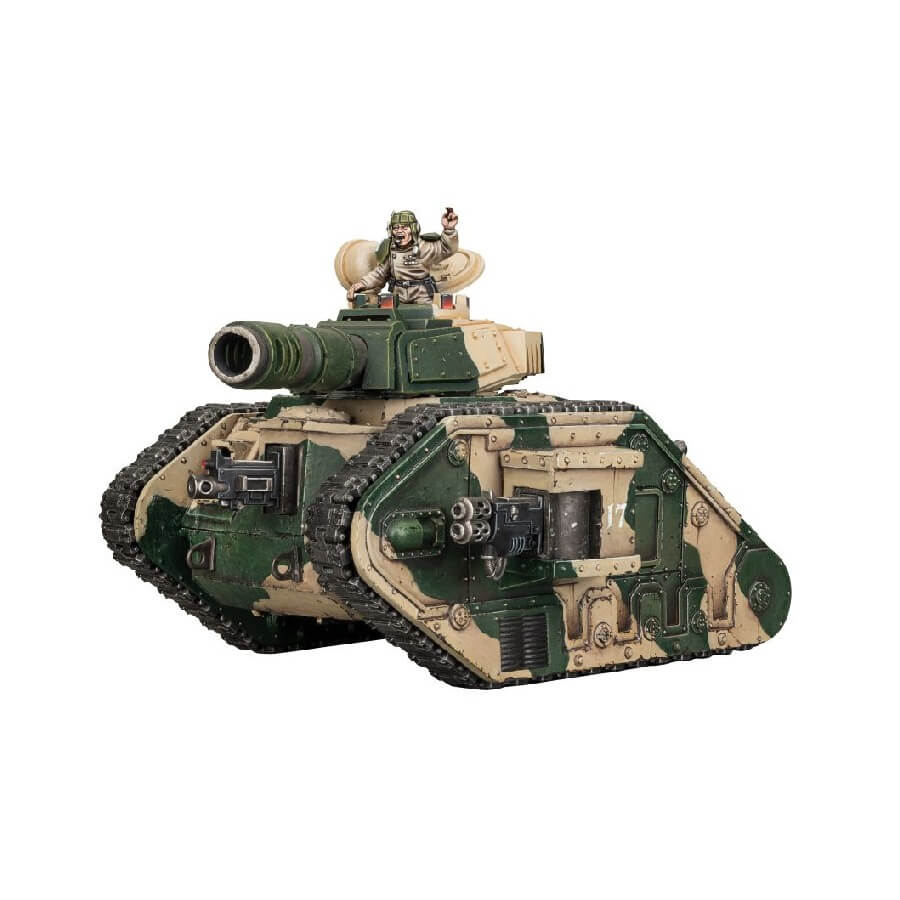
The Astra Militarum, also known as the Imperial Guard, is the primary army of the Imperium of Man in Warhammer 40,000. They are composed of regular humans who have been trained for combat and equipped with standard-issue equipment.
Also known as the Imperial Guard, they are the hammer of the Emperor, often winning through sheer numbers and grit. Notable leaders like Lord Castellan Creed exemplify their strategic prowess and unyielding courage.
They are not superhuman like the Space Marines or the Adeptus Mechanicus, but they make up for it with their sheer numbers and the reliability of their equipment.
The Astra Militarum is best used as a combined arms force, with infantry, vehicles, and artillery working together to achieve victory. They are also good at holding ground and defending key positions.
Playing as Astra Militarum – Pros and Cons
The Astra Militarum are known for their vast numbers, fielding large squads of infantry alongside powerful tanks like Leman Russ Battle Tanks and artillery.
While individual soldiers may be weak, their strength lies in numbers, coordinated artillery barrages, and overwhelming firepower.
However, they can be vulnerable to fast, elite enemy units due to generally lower mobility and individual unit toughness.
Related:
Adeptus Custodes
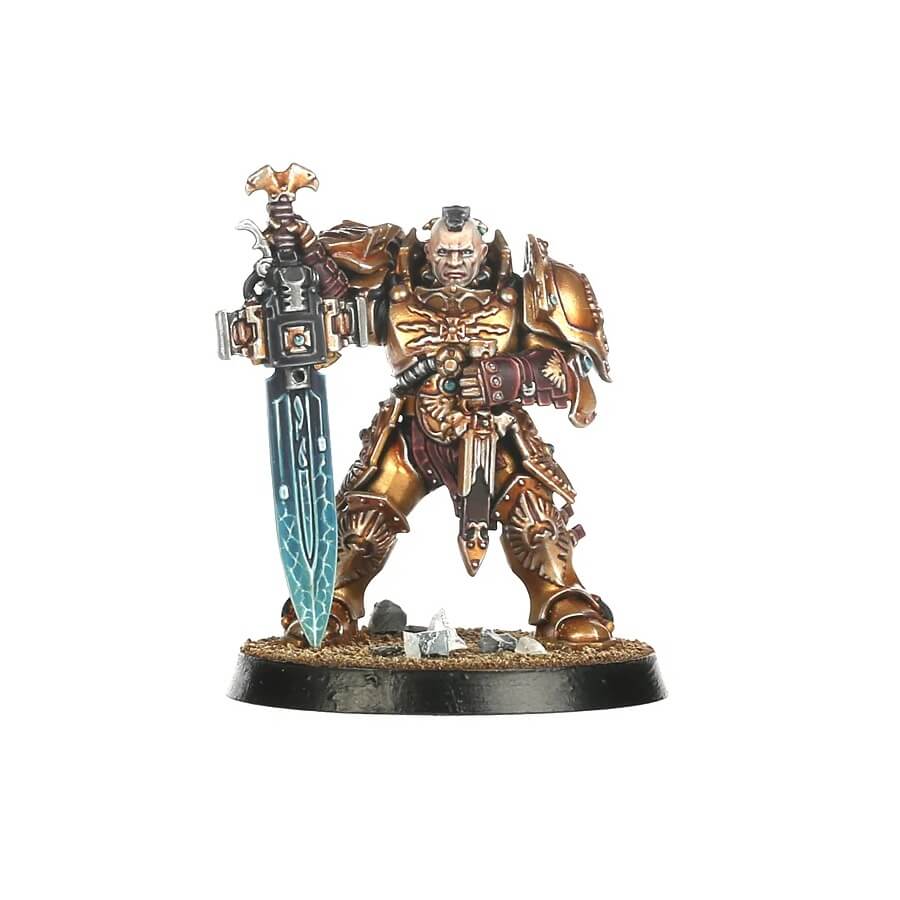
The Adeptus Custodes, known as the Emperor’s Golden Legion, are the elite guardians of the God-Emperor of Mankind.
Each Custodian is created not just as a superhuman warrior but as a supreme being crafted with unparalleled skill, making them far superior to even the enhanced Space Marines.
They are a force of legends, walking the halls of the Imperial Palace on Terra, and only rarely do they leave their sacred duty to fight in the wider galaxy.
Custodians are the epitome of human martial perfection, each one worth a hundred other soldiers. They’ve stood watch for over ten thousand years, a testament to their unyielding duty and immortal service.
A notable Captain-General is Trajann Valoris, known for his strategic brilliance and unmatched combat prowess, embodying the virtues of the Custodes.
Playing an Adeptus Custodes Army on the Table Top:
| Pros | Cons |
|---|---|
| Unmatched individual unit strength. | High points cost per model. |
| Elite units with superior stats. | Smaller army sizes. |
| Exceptional in close combat. | Limited unit variety. |
| Durable models with strong saves. | Strategies can be predictable. |
| Access to powerful characters. | Mobility relies heavily on specific units. |
| Striking golden armor and aesthetics. | Painting gold consistently can be tricky. |
On the tabletop, Adeptus Custodes units are incredibly durable and deadly, reflecting their elite status in the lore. Every model is a hero in its own right, with high toughness, wounds, and a save characteristic that makes them hard to kill.
They carry the finest wargear that the Imperium can offer, from Guardian Spears to Sentinel Blades and Allarus Custodians in their Terminator armor, each capable of significant melee and ranged damage.
However, their elite nature means fielding a smaller force compared to other armies, requiring players to make every model count and strategize carefully.
Each loss can significantly impact the battle’s tide, and thus they demand skilled positioning and resource management to leverage their full potential effectively.
Related:
The Imperial Knights
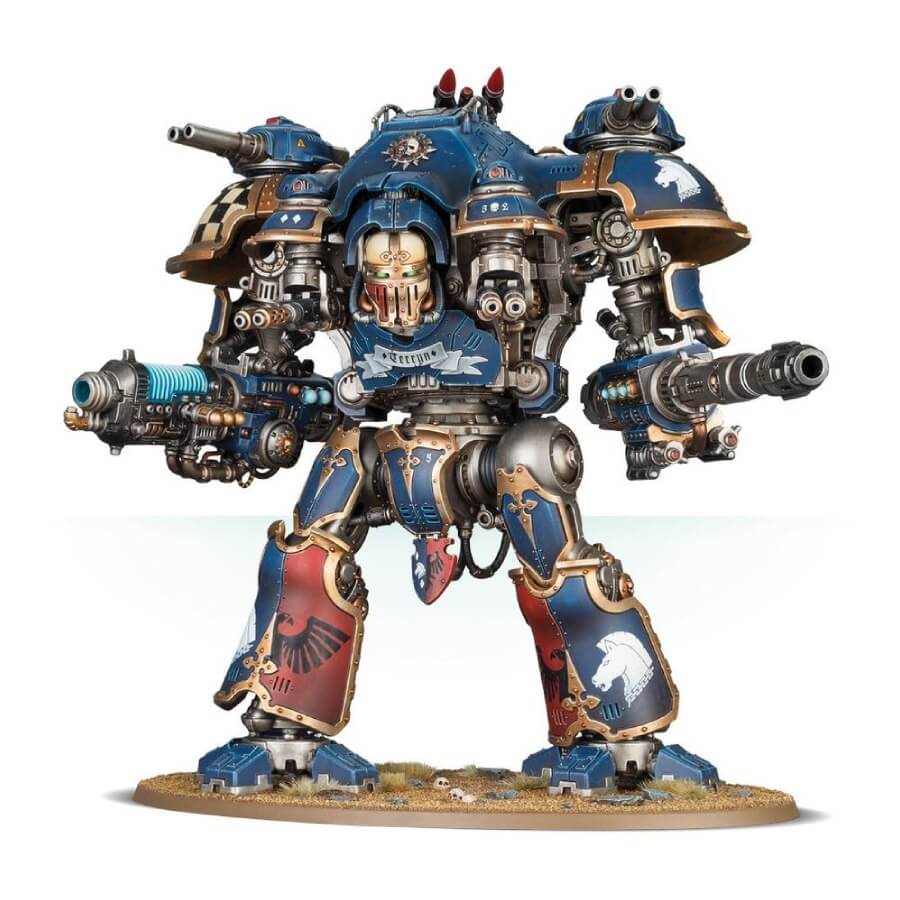
Imperial Knights are ancient mechanical warriors from the Knight Worlds. Bound to noble houses, they pilot these colossal suits known as Knight suits, acting as feudal lords serving the Imperium or other factions.
These noble houses have a rich history of alliances and wars, dating back to before the Age of the Imperium. They are a symbol of power and nobility, with each house having its traditions, heraldry, and codes of honor.
Their presence on the battlefield is as much about martial strength as it is about the prestige and ancient legacy they carry.
Playing an Imperial Knights Army – Pros and Cons
| Pros | Cons |
|---|---|
| Massive individual model strength. | High points cost limits army size. |
| Can dominate in melee and ranged combat. | Vulnerability to objectives-focused missions. |
| Impressive durability and firepower. | Dependence on few models increases risk. |
| Variety of Knights for different roles. | Limited in tactical flexibility. |
| Presence on the battlefield is intimidating. | Weak against armies that can exploit their size. |
| Iconic and imposing models. | Complex and time-intensive to assemble and paint. |
On the tabletop, Imperial Knights are known for their massive size, resilience, and firepower. Each Knight can dominate large swaths of the battlefield, wielding weapons capable of taking down the toughest enemies.
However, their size and power mean they are few in number, making each one a significant investment in your army.
Key units include the Knight Paladin and Knight Errant, while notable characters like High King Tybalt of House Terryn exemplify the honor and martial prowess of these towering warriors.
Related:
Adeptus Astartes or The Space Marines
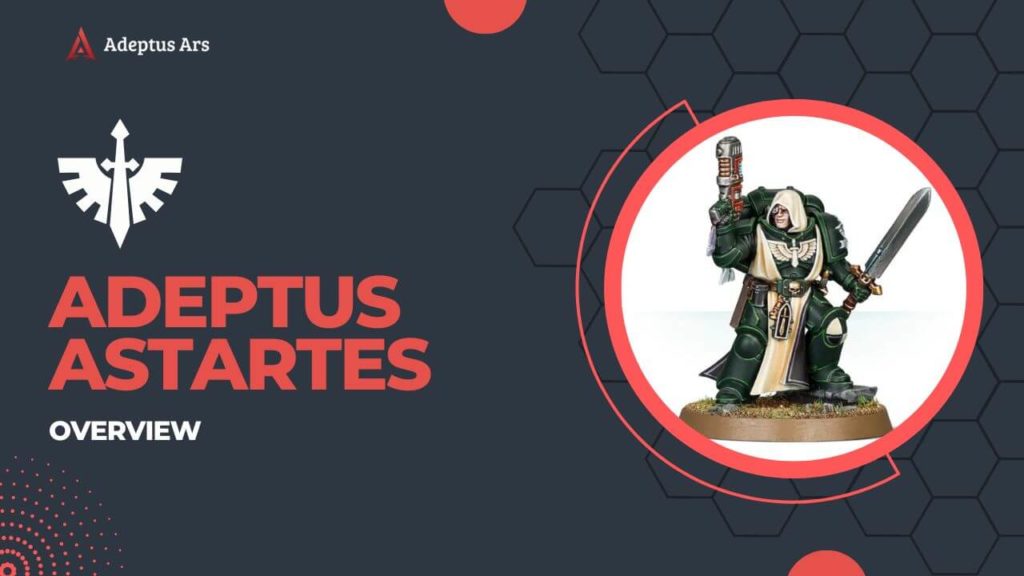
Space Marines are the elite soldiers of the Imperium of Man, genetically enhanced superhumans that serve as the Imperium’s ultimate fighting force.
They are the defenders of humanity, fighting against a wide range of enemies from Xenos (aliens) to Chaos cultists.
The process of creating a Space Marine is a lengthy and dangerous one, with a low survival rate. Once a human is selected for transformation, they undergo gene-enhancement surgery and the implantation of additional organs, such as the Black Carapace.
This allows the Marine to interface with their power armor and become a formidable force on the battlefield.
Space Marines are organized into Chapters, each with their own unique iconography, tactics, and history. Some famous Chapters include the Ultramarines, Dark Angels, and Blood Angels.
Choosing a Chapter will affect the playstyle of your army, as each Chapter has its own unique rules and abilities.
Related:
- Complete list of Space Marine Miniatures and Models
- 10th Edition Spaces Marines Codex
- Complete Guide to the New Space Marines Detachments
- Space Marines Datasheet Cards for the 10th Edition
- The Lore of the Space Marines
Black Templars
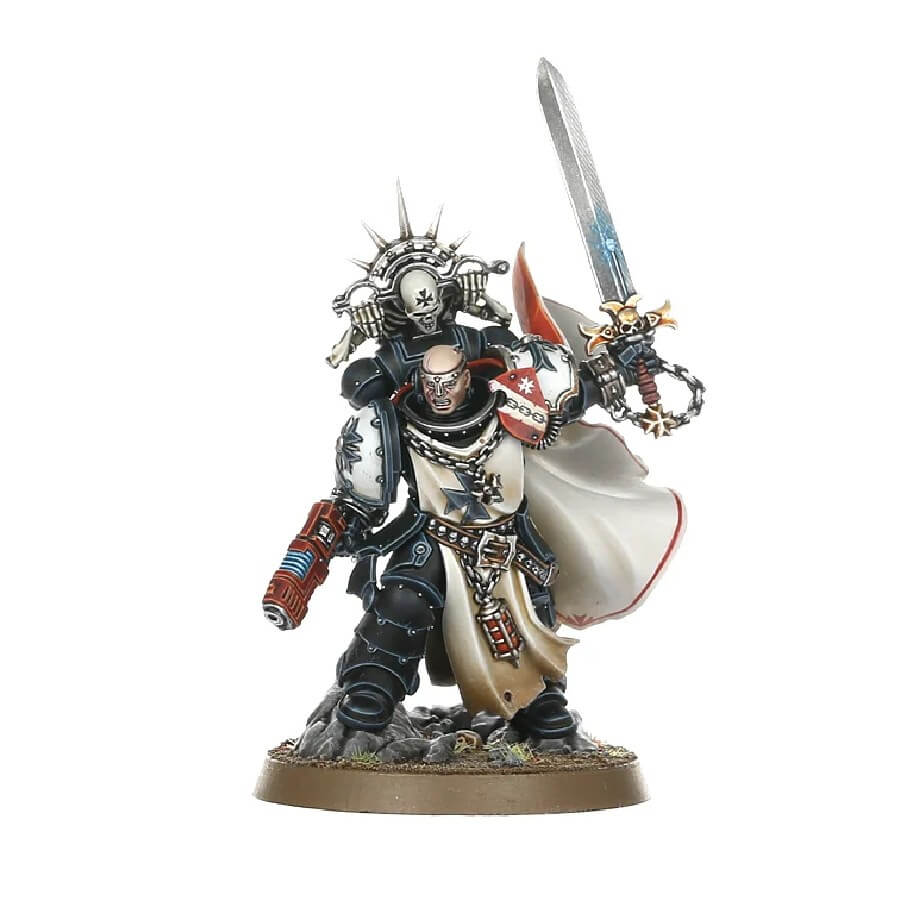
The Black Templars are one of the most fervent chapters, known for their zealous adherence to the Codex Astartes and their never-ending crusades. They are descendants of the Imperial Fists and maintain a deep devotion to the Emperor.
Unlike other chapters, they do not have a fixed homeworld, instead living aboard their fleet, constantly engaging in crusades across the galaxy. Their combat doctrine emphasizes close combat, valuing courage and honor above all.
Playing the Black Templars on the Tabletop – Pros and Cons
| Pros | Cons |
|---|---|
| Strong in melee with special buffs and stratagems. | Limited unit choice due to thematic rules. |
| Vows and Passions system for customization and depth. | Melee focus may struggle in certain missions or against certain foes. |
| Unique relics and traits enhance characters. | Strategies might be predictable due to reliance on melee and vows. |
| Characters deeply embody the chapter’s theme. | Army building and strategy complexity due to vows. |
| Rich narrative and aesthetics. | Detailed models require advanced painting skills. |
In tabletop gaming, the Black Templars’ strength lies in their aggressive melee capabilities and vows that enhance their combat effectiveness.
However, this focus can make them less flexible and more predictable in certain scenarios, as they tend to engage in direct assaults often without the same ranged support or psychic abilities as other chapters.
Their dedication to crusading also means they are continually on the offensive, which can be a double-edged sword depending on the battle’s flow.
In the 10th Edition, the Black Templars have their own detachment, called the Righteous Crusaders allowing them to draw power from different vows to enhance their units and have an answer to any kind of threat.
Related:
Dark Angels
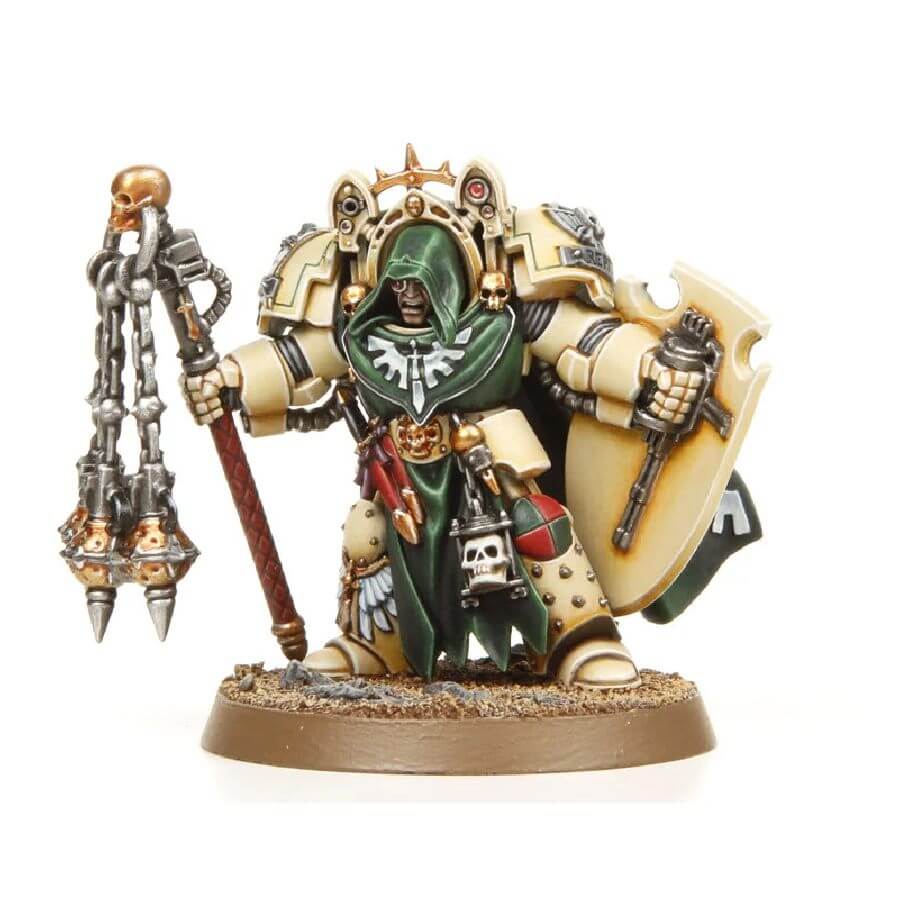
The Dark Angels, known as the First Legion during the time of the Great Crusade, are shrouded in mystery and bound by a dark secret. They are descendants of Lion El’Jonson, a primarch whose gene-seed was scattered across the galaxy, eventually landing on the planet Caliban.
The Dark Angels are characterized by their knightly theme and their relentless pursuit of The Fallen, their lost brethren who succumbed to Chaos during the Horus Heresy.
They are driven by the need to atone for this perceived betrayal and stop at nothing to hunt down the traitorous elements within their ranks. This sense of guilt and drive for redemption is a defining characteristic of the chapter.
Dark Angels on the Tabletop – Pros and Cons
| Pros | Cons |
|---|---|
| Unique units like Deathwing and Ravenwing. | Complex rules and unit dependencies. |
| Varied tactical options. | Reliance on specific units for best performance. |
| Strong characters, (including a Primarch) boost unit effectiveness. | Elite units lead to smaller armies. |
| Army-specific stratagems and relics. | May struggle with extreme combat scenarios. |
| Deep lore and distinctive visuals. | Detailed models challenging to paint. |
On the tabletop, the Dark Angels are versatile, known for their three distinct wings: the standard Greenwing of regular marines, the fast-moving Ravenwing bikers, and the resilient Deathwing terminators.
They are known for their resilience and firepower. However, their focus on specific units and tactics can make them less flexible in certain situations.
They excel in scenarios where they can utilize their specialized detachments but may struggle in more fluid or varied battles.
Their unique stratagems and units give them powerful options, but it also means they can be predictable and reliant on certain combos to be effective.
Related:
Deathwatch
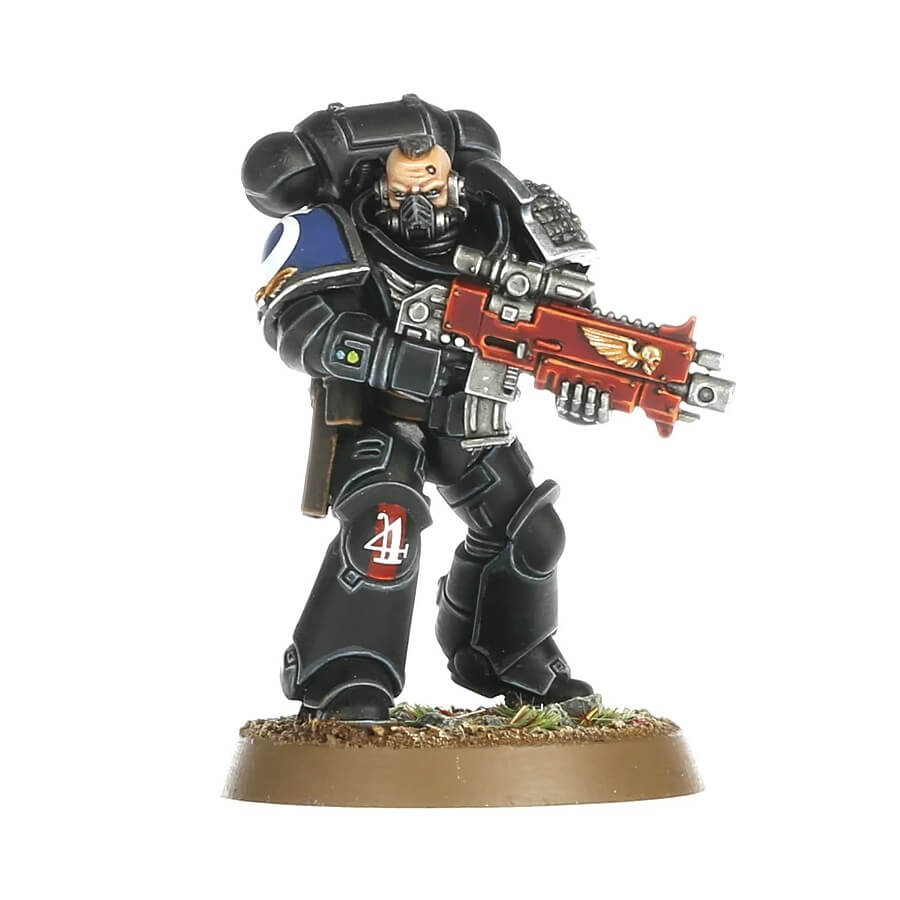
The Deathwatch is a unique and highly specialized Space Marine Chapter that stands apart from the Adeptus Astartes, focusing solely on xenos threats.
Comprised of hand-picked veterans from various chapters, each member brings their unique skills and weapons to the team. Known as the Chamber Militant of the Ordo Xenos, they are the ultimate weapon against alien menace, operating in small, highly efficient teams called Kill-Teams.
Their sole purpose is to exterminate alien threats before they can endanger the Imperium.
Choosing the Deathwatch as your Army – Pros and Cons
| Pros | Cons |
|---|---|
| Mixed-unit flexibility with Kill Teams. | Complex army building and stratagems. |
| Versatile; adaptable to various foes. | Smaller, elite forces due to high unit costs. |
| Access to the best gear and weaponry. | Requires strategic depth to maximize potential. |
| Specialized ammunition enhances effectiveness. | Can struggle against highly specialized armies. |
| Strong narrative and unique aesthetics. |
On the tabletop, Deathwatch are known for their exceptional flexibility and variety of specialized weaponry. They can adapt their strategies and loadouts to face any xenos threat, making them incredibly versatile.
The 10th Edition brings an enhanced strategic element to the Deathwatch via the “Black Spear Task Force” detachment. Central to this is the distinctive “Kill Teams” rule, distinguishing the Deathwatch from usual Space Marine chapters.
Rather than typical unit behaviors, Kill Teams adjust to combat situations, utilizing the predominant toughness value for determining wounds and displaying versatility in transport capacity, considering all units as Infantry.
Related Pages:
White Scars
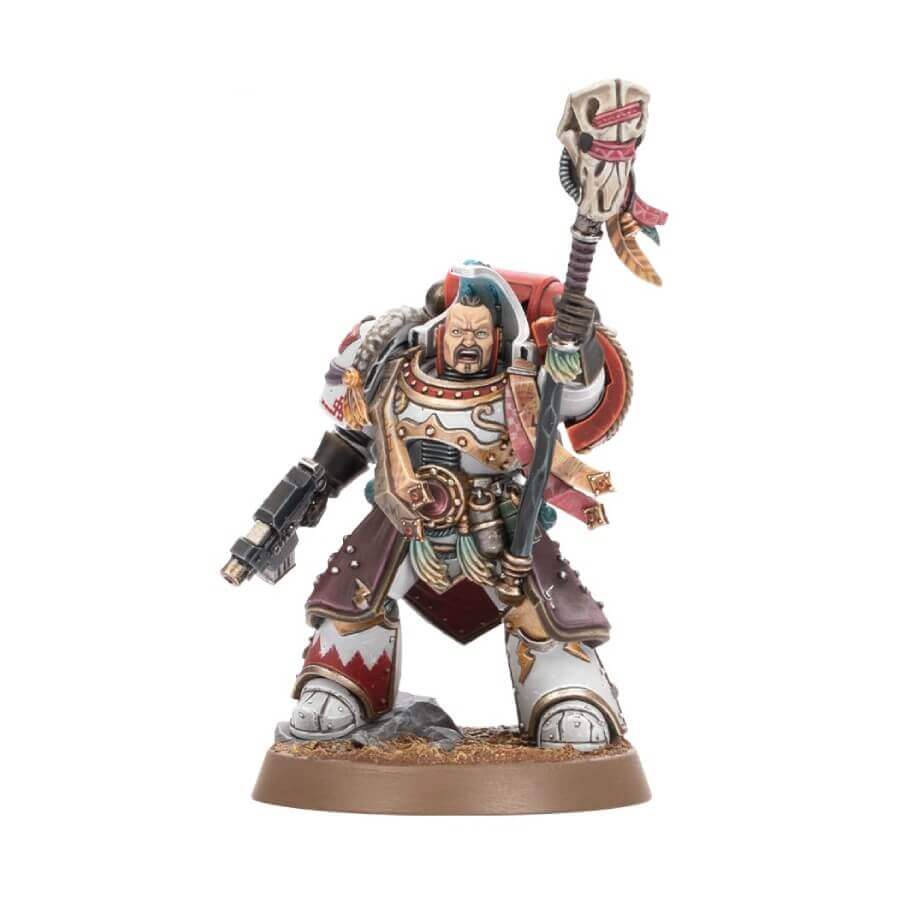
The White Scars, known as the Ordu of Jaghatai, hail from the V Legion of the original Space Marine Legions, founded by the Emperor of Mankind.
Their Primarch is Jaghatai Khan. With a culture drawing from the nomadic tribes of their home world, Chogoris, they are known for their lightning-fast hit-and-run tactics.
Despite the perception of barbarism, they are a deeply cultured chapter with a rich tradition of poetry and an ancient language.
They were loyal to the Emperor during the Horus Heresy and continued to be a formidable force in the galaxy, valued for their swift and devastating attacks and the cultural depth they bring to the Adeptus Astartes.
White Scars on the Tabletop – Pros and Cons
| Pros | Cons |
|---|---|
| Fast and mobile, excelling in hit-and-run tactics. | Reliant on mobility; can be cornered by clever positioning. |
| Special rules bolster speed and charge effectiveness. | Specialized tactics may not fare well in all scenarios. |
| Access to unique, fast attack units and characters. | High skill ceiling for maximizing mobility and impact. |
| Enhanced bike and land speeder capabilities. | Potentially less durable compared to more static factions. |
| Strong cultural lore and distinct visual theme. | Elite units and vehicles may lead to higher army costs. |
The White Scars reflect their homeworld’s tribal culture and are known for their highly mobile warfare style, preferring fast attacks using bikes, jetbikes, and landspeeders.
They are organized into Brotherhoods, each a mechanized unit capable of rapid strikes and quick withdrawals, making them unpredictable and formidable on the battlefield. This play style, inspired in the new edition a Space Marines Detachment – The Stormlance Task Force.
While this mobility and speed are their greatest assets, it can also lead to them being somewhat less effective in prolonged or static warfare scenarios where heavy fortifications or sustained fighting is necessary.
Their unique organizational structure and tactics make them distinct but may require more finesse to utilize effectively in the tabletop game.
Space Wolves
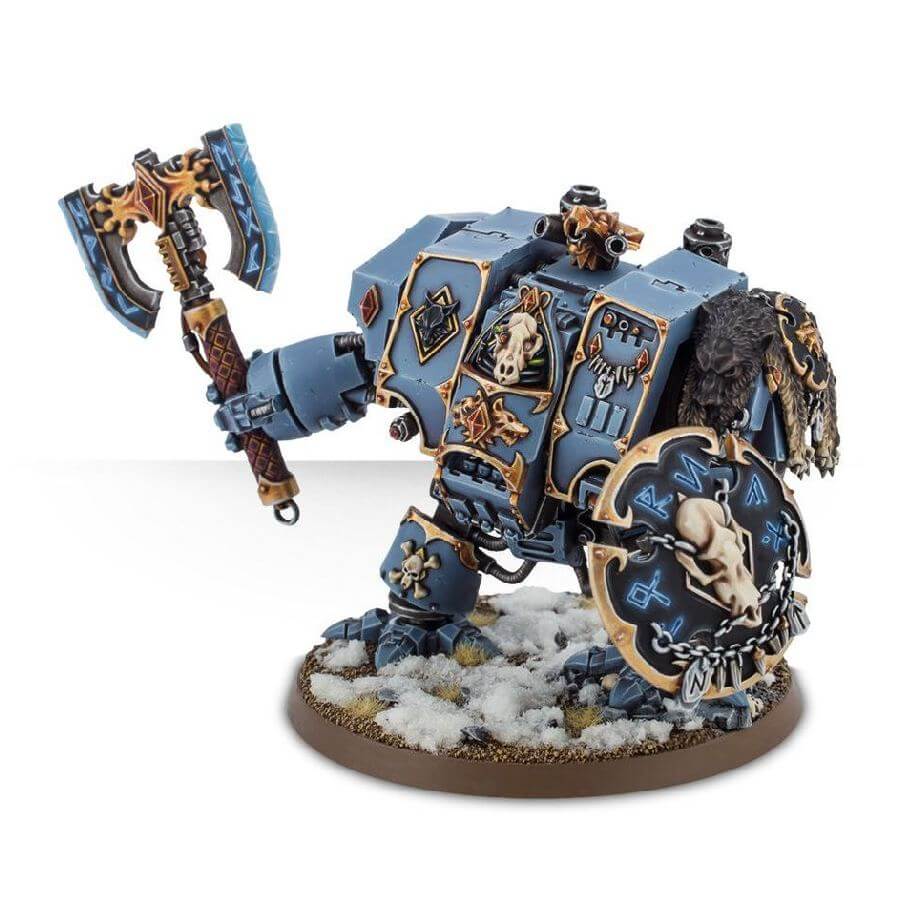
The Space Wolves, known for their ferocious and wild nature, are one of the most storied chapters in the Warhammer 40k universe.
They hail from the icy deathworld of Fenris and are embodied by the spirit of their Primarch, Leman Russ. Each Space Wolf is a saga unto himself, with great deeds echoing in the annals of history.
They are a primal force, with Rune Priests that draw upon their planet’s spirit to unleash icy tempests upon foes, favoring the close press of melee and rapid assaults.
Their culture revolves around pack tactics, honor, and the strength of the wolf, making them unique among the Adeptus Astartes for their fierce independence and warrior ethos.
Space Wolves on the Tabletop – Pros and Cons
| Pros | Cons |
|---|---|
| Excel in close combat with ferocious melee capabilities. | Less effective at long-range engagements. |
| Access to unique units like Thunderwolf Cavalry. | Can struggle with mobility in certain terrain. |
| Potent heroes and leaders that inspire troops. | Specialized tactics might be predictable. |
| Strong army-wide abilities enhancing their resilience. | Relatively high points cost for elite units. |
| Rich Viking-inspired lore and distinctive aesthetics. | Complexity in painting detailed models. |
On the tabletop, Space Wolves are a melee powerhouse. They favor close combat and excel in it, with their troops and characters being tailored towards this aspect of warfare.
Their own Sons of Russ Stratagem allows them to hit harder in the first round of combat and perform heroic interventions, making them formidable in the charge and counter-charge aspects of the game.
However, their focus on melee and specialist units means they might lack flexibility compared to other chapters, particularly in scenarios requiring long-range engagements or a more subtle approach.
Their unique units and characters provide a diverse set of options for players to explore, making them a versatile and thematic choice for those who enjoy the melee phase of combat and the rich lore of the Space Wolves.
Related:
Grey Knights
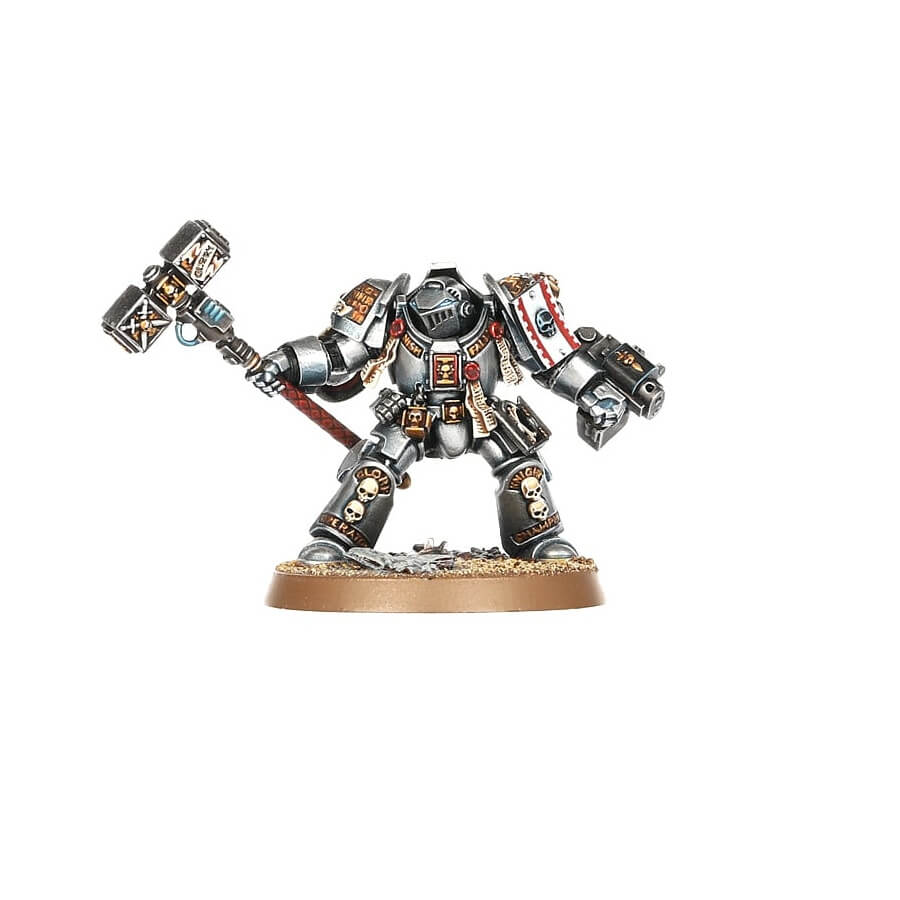
The Grey Knights are a secretive chapter of Space Marines created during the closing days of the Horus Heresy as a weapon against the daemonic.
Each member is a powerful psyker, handpicked for their incorruptibility and martial prowess. Founded by the Emperor himself and shrouded in mystery, they are unknown to the wider Imperium and operate from their fortress-monastery on Titan.
They are the ultimate sanction against the Warp, wielding sanctified weapons and armor to combat the greatest threats to mankind.
Playing a Grey Knights Army – Pros and Cons
| Pros | Cons |
|---|---|
| Masters of psychic warfare with potent abilities. | Higher points cost for powerful psychic units. |
| All units can cast and deny psychic powers. | Reliance on psychic phase for buffs and damage. |
| Strong in both melee and ranged combat. | Limited unit diversity compared to other Space Marines. |
| Effective against daemonic and warp-based foes. | Can struggle with overwhelming numbers or swarms. |
| Distinct, ornate steel-grey armor and lore-rich background. |
On the tabletop, Grey Knights are distinguished by their powerful psychic abilities, with each unit capable of casting and denying spells, making them incredibly versatile and potent against any foe, especially daemons.
Key units like the Nemesis Dreadknight represent their advanced technology and psychic might. However, they are an elite force with a relatively high points cost per model and may lack the numerical advantage of other armies.
Each Grey Knight is a formidable force, but players must use them wisely to capitalize on their psychic prowess and martial skills. A key character is Grand Master Voldus, known for his exceptional command and potent psychic abilities.
Related:
Imperial Fists
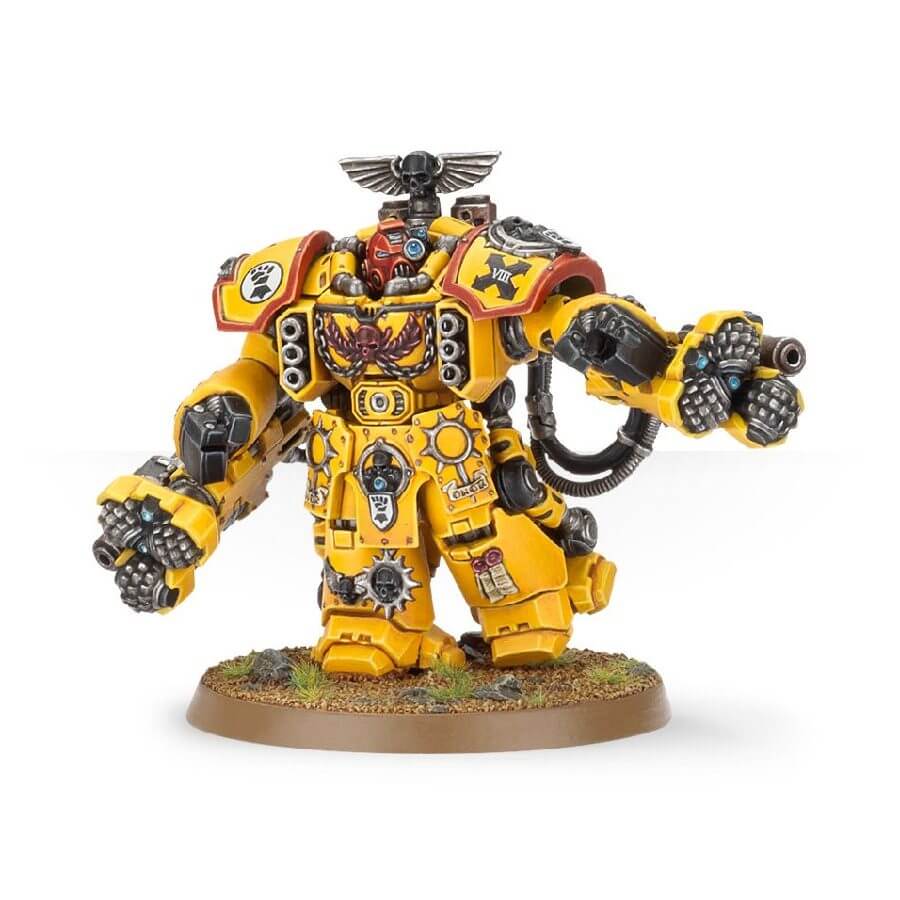
The Imperial Fists are recognized as the stalwart defenders of Terra and the Solar System. As the castellans of Terra, they are known for their unyielding defense and strategic expertise in siege warfare.
Founded by their Primarch Rogal Dorn, the Imperial Fists are renowned for their stoicism and their unwavering loyalty to the Emperor of Mankind.
Throughout the Horus Heresy and beyond, they have stood as a bulwark against the threats to the Imperium, their yellow-clad warriors holding fast in the face of overwhelming odds and selling their lives dearly to protect mankind’s throne world.
Choosing an Imperial Fists Army to Play on the Table top – Pros and Cons
| Pros | Cons |
|---|---|
| Excellent at siege and defensive tactics. | Less flexibility in fast-paced scenarios. |
| Enhanced firepower, especially when stationary. | Adaptation challenges in dynamic battles. |
| Specialized units and characters enhance defense. | Potentially higher points cost for elite units. |
| Potent ranged combat capabilities. | Limited mobility compared to more agile factions. |
| Iconic yellow armor and rich lore. |
On the tabletop, the Imperial Fists specialize in ranged warfare, particularly with bolter weaponry, reflecting their lore as masters of siege and fortification.
Their chapter tactic allows ranged attacks to ignore the effects of light cover, and they excel at holding objectives due to their resilience. Their bolter drill is notorious for its high rate of fire, making them exceptionally lethal in shooting phases.
However, while they excel in ranged combat and defense, they might not be as mobile or flexible as other chapters in adapting to rapidly changing battlefield conditions.
The Imperial Fists’ focus on fortification and ranged combat makes them a solid choice for players who prefer a defensive and strategic playstyle, emphasizing firepower and durability.
Related:
Blood Angels
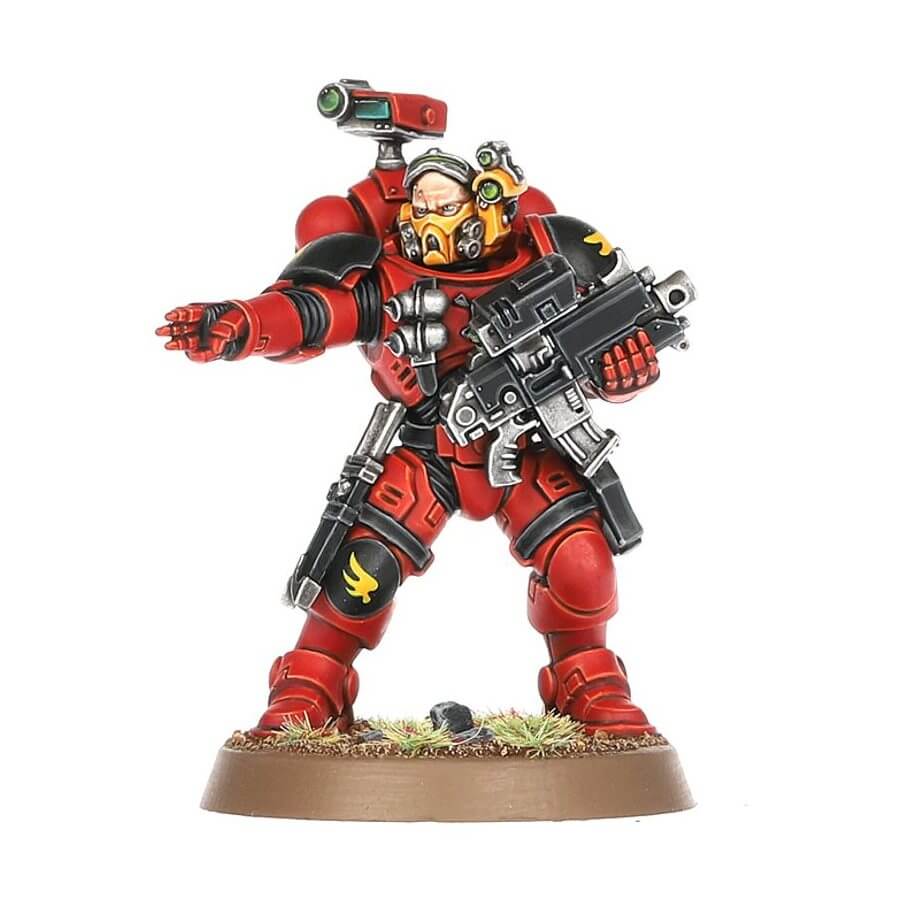
The Blood Angels are revered as noble and selfless defenders of humanity, yet they carry a dark curse known as the Red Thirst, an insatiable craving for blood.
They are descendants of Sanguinius, the Emperor’s angelic Primarch, whose supernatural strength and tragic death at the hands of Horus during the Horus Heresy cast a long shadow over the chapter.
The Blood Angels balance their angelic nature and vampiric urges, striving to uphold their noble legacy while battling their inner demons
Blood Angels on the Tabletop – Pros and Cons
| Pros | Cons |
|---|---|
| Exceptional in melee combat, enhanced by Sanguinary discipline. | Can struggle with ranged engagements due to melee focus. |
| Fast and aggressive, excelling in rapid assaults. | High points cost for elite units limits army size. |
| Unique units like Death Company and Sanguinary Guard. | Reliance on key units may predict tactics. |
| Potent character buffs and heroic figures. | Vulnerable to psychic and heavy shooting armies. |
| Rich, tragic lore and striking red armor aesthetics. | Detailed models and red paint scheme challenging to perfect. |
The Blood Angels are a melee-centric army, known for their aggressive and powerful characters and specialist units.
They utilize Combat Doctrines effectively, transitioning from Devastator to Assault, enhancing their combat prowess across the battle’s phases.
The “The Red Thirst” chapter rule and their unique Sons of Sanguinius stratagem significantly boost their charge and first-round combat effectiveness, making them a devastating force in melee.
While they excel in close quarters, their specialization means that they may have less versatility compared to other chapters, particularly in ranged engagements or against foes that can effectively counter charge-based strategies.
Related:
Iron Hands
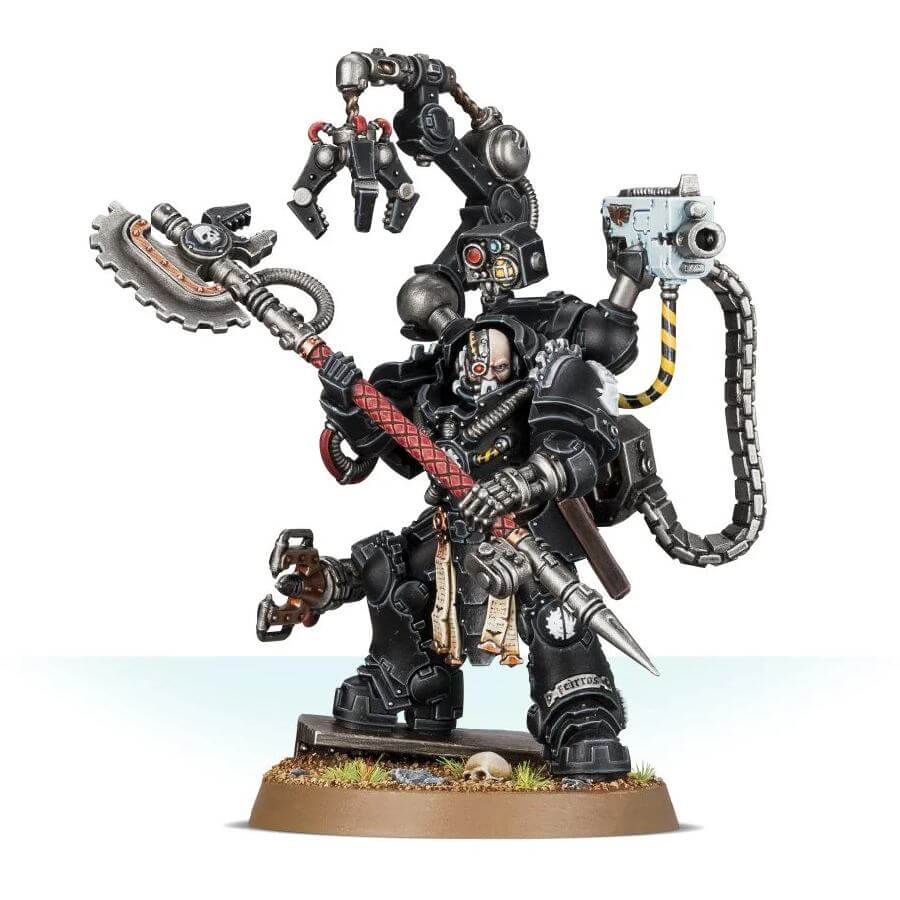
The Iron Hands are a chapter of Space Marines characterized by their cold logic and disdain for the weakness of the flesh, which they seek to replace with bionics and machine parts.
They are the descendants of Ferrus Manus, known as The Gorgon, who was renowned for his iron will and fiery wrath.
The harsh realm of Medusa shaped their Primarch and thus the chapter itself, leading them to embrace the purity of the machine over the fallibility of flesh.
The Iron Hands are known for their austere and unyielding nature, viewing weakness with contempt and striving for a form of perfection found only in the machine.
Playing the Iron Hands on the Tabletop – Pros and Cons
| Pros | Cons |
|---|---|
| Exceptional durability with enhanced vehicle and infantry resilience. | Can be less mobile due to focus on heavy units. |
| Strong in long-range firepower and defensive tactics. | May lack flexibility in adapting to rapid assault strategies. |
| Access to powerful tech and repair abilities. | Reliance on mechanical units might be exploited by anti-armor tactics. |
| Beneficial Chapter Tactics for vehicles and Techmarines. | Limited melee capabilities compared to other Space Marine chapters. |
| Stoic, machine-oriented aesthetic and lore. |
On the tabletop, the Iron Hands are a force that heavily emphasizes firepower and durability. Their army composition typically focuses on tanks, dreadnoughts, and long-ranged weaponry, making them a formidable ranged force.
The Iron Hands inspired detachment offers significant advantages to Techmarines, Dreadnoughts, and Tanks (as well as all mechanical units) aiming to promote a gameplay strategy focused on overpowering the opposing army. Additionally, the Iron Hands enjoy unique benefits enhancing their heavy weaponry further.
However, this focus on heavy ordnance may limit their flexibility, and their units can be costly in terms of points, making them a more specialized force that requires strategic planning and resource management.
Related:
Ultramarines
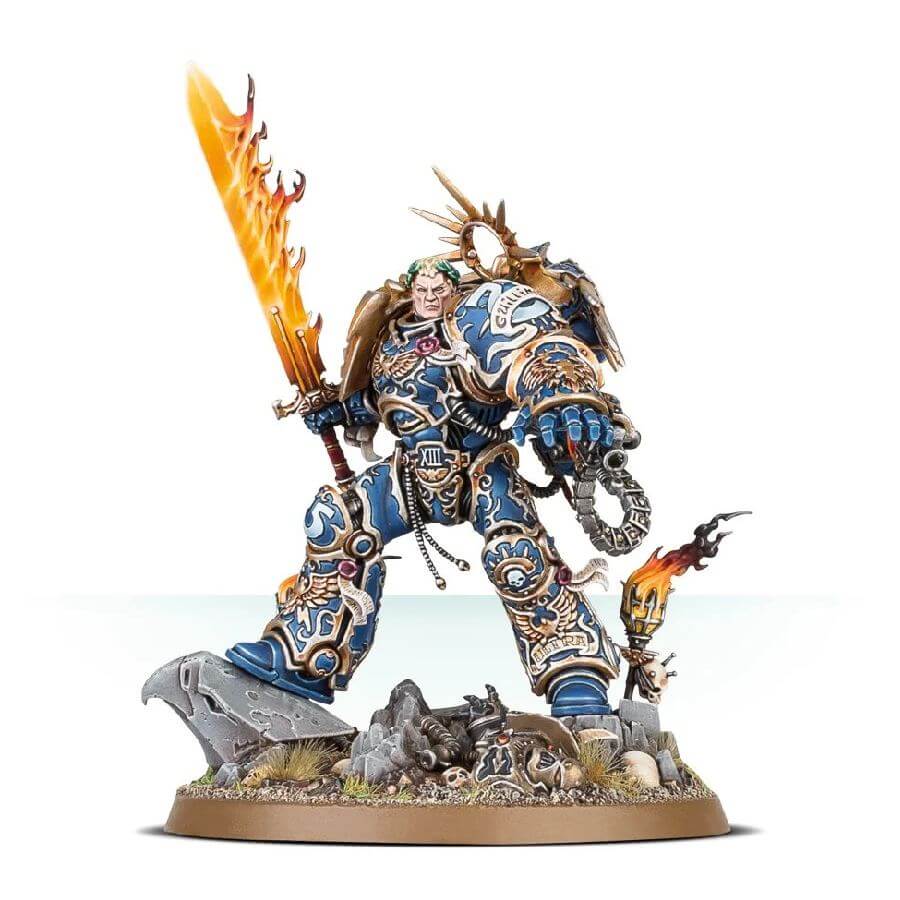
The Ultramarines, known as the XIII Legion Astartes during the Great Crusade, are perhaps the most emblematic of all Space Marine chapters.
They are the very paradigm of what it means to be a Space Marine: unflinchingly loyal, civilised, and refined, yet uncompromising in war.
They hail from the world of Macragge and were founded by their Primarch, Roboute Guilliman. Known for their balanced approach to warfare and governance, they carved out an empire in space around their homeworld, embodying the ideals of nobility, strategy, and versatility.
After being critically wounded post-Horus Heresy, Guilliman was in stasis for millennia before his recent resurrection, bringing a new era of leadership and direction to the Ultramarines and the broader Imperium.
Ultramarines on the Tabletop – Pros and Cons
| Pros | Cons |
|---|---|
| Versatile units and strategies. | Higher points cost per unit. |
| Strong, well-armored elite units. | Can be outnumbered by swarm armies. |
| High Leadership and morale. | Choices can be overwhelming. |
| Access to advanced weaponry. | Commonly used, so often well-countered. |
| Unique army-wide abilities and tactics. | Painting precision required for iconic scheme. |
| Opportunity for extensive customization. |
On the tabletop, Ultramarines are a versatile and tactical force, reflecting their lore’s emphasis on adaptability and strategic mastery.
Their Legion Tactic, Scions of Guilliman, allows them to maintain offensive capabilities even after retreating from melee, making them tactically flexible and difficult to pin down.
They have a wide selection of Psyker spells, units, relics, and characters, offering a broad toolkit for various scenarios. The presence of Roboute Guilliman himself provides significant buffs to nearby units, enhancing their battlefield effectiveness substantially.
However, their generalist nature means they might not excel as much as more specialized chapters in certain niche strategies.
Nonetheless, they are a strong choice for players who appreciate a balanced approach and the ability to adapt to a wide array of battlefield scenarios.
Related:
Salamanders
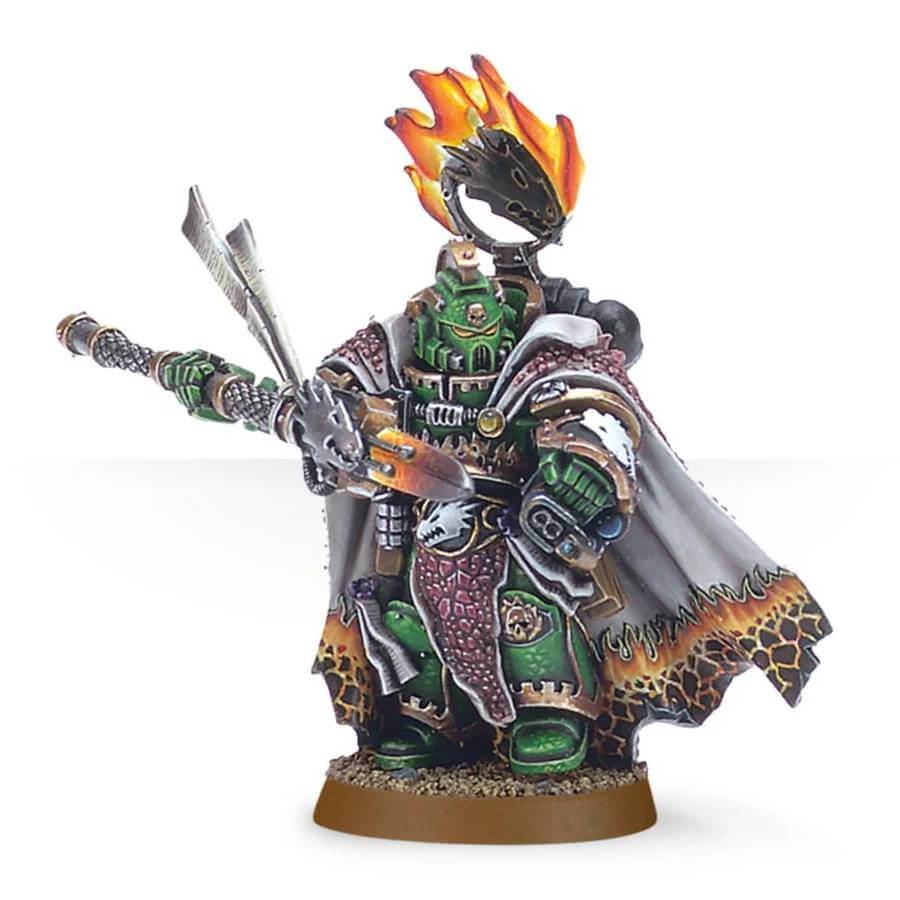
The Salamanders are known for their exceptional craftsmanship, resilience, and the unique Promethean Cult.
Hailing from the volcanic world of Nocturne, they are as hardy as the saurians that roam their planet, with each brother being a skilled artisan capable of crafting arms and armor rivaling the finest in the Imperium.
They are fierce warriors who embody the fire and fury of their home, utilizing hammers, flamers, and meltaguns to incinerate their enemies.
Their Primarch, Vulkan, is a figure of great reverence, and they follow the Promethean Cult, which emphasizes the virtues of self-sacrifice, mutual aid, and the purifying aspect of fire.
Playing the Salamanders on the Tabletop – Pros and Cons
| Pros | Cons |
|---|---|
| Masters of flame-based weaponry and close combat. | Shorter effective range due to emphasis on flamers and meltas. |
| Enhanced durability for infantry units. | Potentially predictable with a focus on fire-based tactics. |
| Access to unique, potent units like the Firedrakes. | Elite units and wargear can lead to higher points costs. |
| Strong character options with inspiring leadership abilities. | Limited fast attack options compared to other Space Marine chapters. |
| Rich lore with a focus on honor and resilience. | Specialized painting techniques required for unique fire effects. |
Salamanders are an aggressive and durable Space Marine army and in the 10th Edition, they are the inspiration for a unique Space Marines Detachment.
The Firestorm Assault Force Detachment allows your ranged weapons and boosts their strength by +1 if the target is within a 12” range.
They excel with flamer and melta weaponry, gaining significant bonuses with their stratagems, including increased accuracy and damage. Their unique stratagems and units, like Immolation Protocol gives all of a single unit’s TORRENT weapons the DEVASTATING WOUNDS ability.
While they are not a premier close combat faction, their tactics and armaments make them formidable in melee and versatile enough to handle various threats on the battlefield.
However, their specialized focus on flame and melta might limit their effectiveness against certain foes or in particular strategic scenarios
Raven Guard
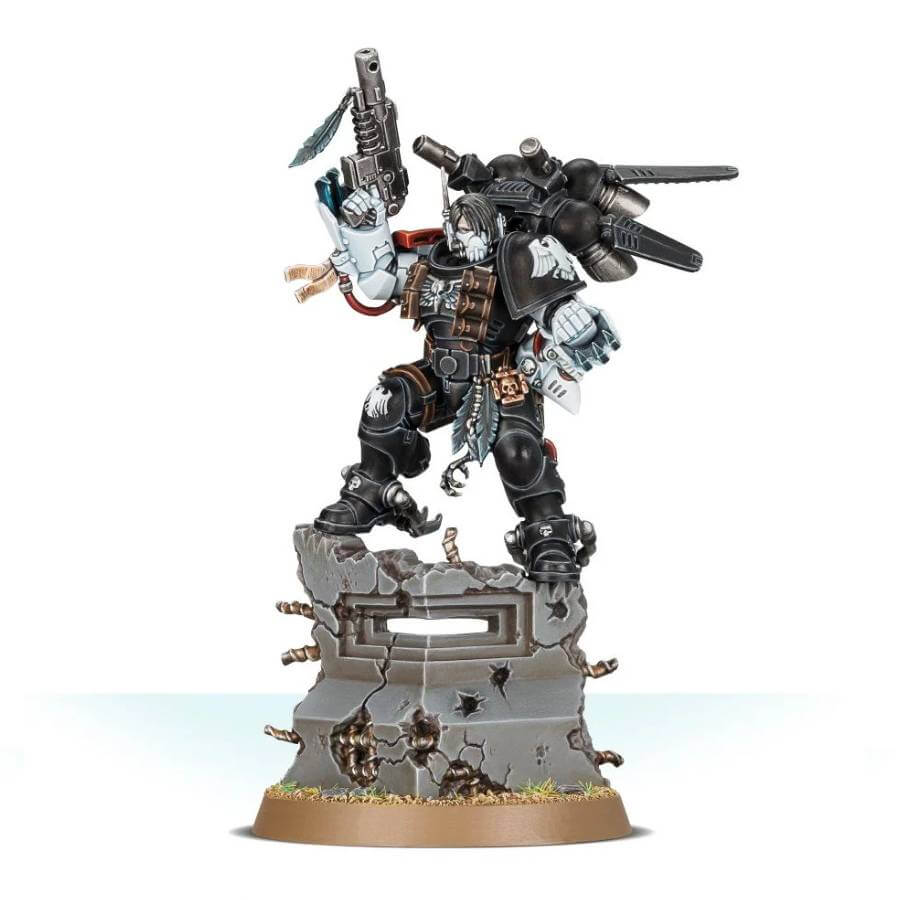
The Raven Guard are renowned for their stealth, mystery, and precision strikes. Founded as the 19th Space Marine Legion, they are masters of infiltration and covert operations.
They are known for sowing chaos and destabilizing their foes before striking from the shadows, embodying a darker aspect of warfare while maintaining loyalty to the Imperium.
The Raven Guard was heavily decimated during the Horus Heresy but has since continued as a formidable force under the leadership of of their Primarch, Corvus Corax, specializing in guerrilla tactics and hit-and-run warfare.
Fielding a Raven Guard army on the Tabletop – Pros and Cons
| Pros | Cons |
|---|---|
| Excel in stealth and guerrilla tactics. | Can struggle in direct, prolonged engagements. |
| Units specialize in infiltration and surprise attacks. | Relatively weaker in head-on combat than other Space Marine Chapters. |
| Access to unique stealth-oriented units and gear. | Dependence on cover and terrain for effectiveness. |
| Beneficial Chapter Tactics for ambush and hit-and-run. | Limited heavy support options compared to other chapters. |
| Strong lore focused on secrecy and precision. | Complex strategies require careful planning and execution. |
In tabletop play, Raven Guard’s strengths lie in their ability to perform sudden, devastating strikes and remain hidden until the moment of attack. They are particularly effective in scenarios that reward agility and surprise.
However, their reliance on stealth and precision can be a disadvantage in prolonged battles or against enemies that excel in direct, brutal warfare, as they may lack the staying power of more heavily armored or numerous forces.
In the 10th Edition, the chapter serves as an inspiration for the Vanguard Spearhead Detachment, a tactic that enhances Stealth units and penalizes enemies that shoot at your units from a distance.
Related:
The Forces of Chaos
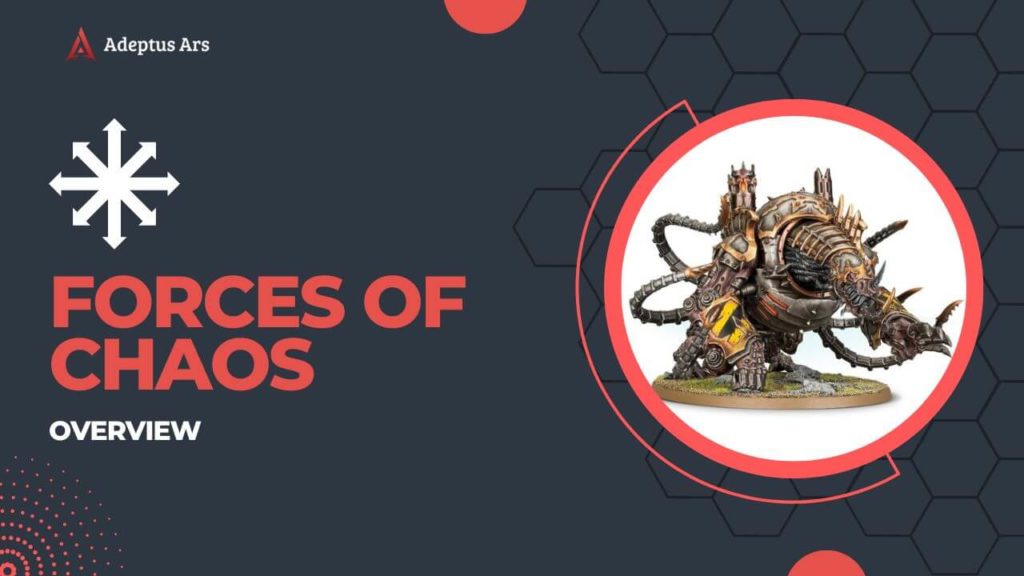
The term “Forces of Chaos,” also spelled as “Chaos Armies,” is used to describe all mortal and Daemonic servants of Chaos Undivided and the individual Ruinous Powers of Chaos. These forces are often referred to as the “Archenemy” by the defenders of the Imperium.
Although the Chaos Space Marines are the most visible and powerful among the Chaos Forces, they are not the only ones. Countless other Chaos servants support them, including Human Chaos Cultists, Traitoris Militarum soldiers, Traitor Titan Legions, Chaos Knights, members of the Dark Mechanicum, and legions of Chaos Daemons.
Related:
Chaos Space Marines
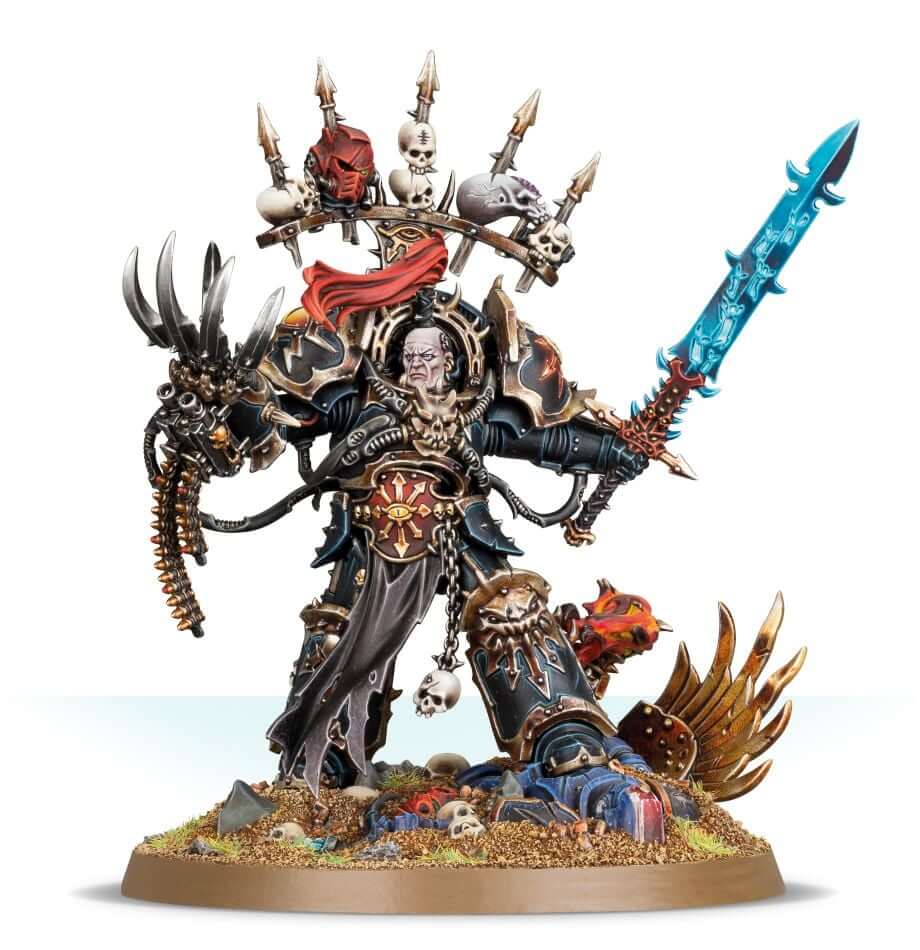
Chaos Space Marines are the fallen brethren of the Adeptus Astartes, turned to the dark gods of Chaos. These warriors have forsaken their oaths to the Emperor, seeking power and immortality offered by the Warp.
They are the eternal enemies of the Imperium, each marine a veteran of centuries or even millennia of war, twisted by the dark powers they serve.
Key figures like Abaddon the Despoiler, leader of the Black Legion, embody their endless war against the Imperium, leading Black Crusades that ravage the galaxy.
The Chaos Space Marines are known for their powerful and brutal fighting style. They are heavily armored and equipped with a variety of weapons that allow them to wreak havoc on their enemies. They also have access to powerful psychic abilities, which they use to manipulate the minds of their enemies and sow chaos on the battlefield.
The Chaos Space Marines are divided into different Legions, each of which is dedicated to a particular Chaos God. Some examples of Chaos Space Marine Legions are: the World Eaters, The Thousand Sons, The Death Guard or The Emperor’s Children.
Playing as Chaos Space Marines – Pros and Cons
| Pros | Cons |
|---|---|
| Diverse unit roster with gods-specific warriors. | Can be challenging to synergize diverse units effectively. |
| Powerful psychic abilities and daemon allies. | Vulnerability to anti-chaos and psychic counter-strategies. |
| Access to devastating chaos artifacts and powers. | Potential for high points cost with elite units and characters. |
| Unique Dark Pacts abilities reflecting the chaos gods’ favor. | Faction complexity requires deep understanding for optimal play. |
| Rich, dark lore with extensive customization options. | Thematic painting and modeling may be intricate and time-consuming. |
On the tabletop, Chaos Space Marines combine the martial prowess of their loyalist counterparts with the malevolent gifts of the Chaos Gods.
They can field a wide variety of units, from corrupted Heretic Astartes to demonic engines like the Defiler. Players can align them with specific Chaos Gods, enhancing their troops with unique abilities and mutations.
While they offer versatility and potent daemon allies, they may also suffer from unpredictability and the double-edged nature of their dark pacts.
Their key units like Chaos Terminators and Obliterators provide heavy support, making them a diverse and formidable force.
Related:
Death Guard
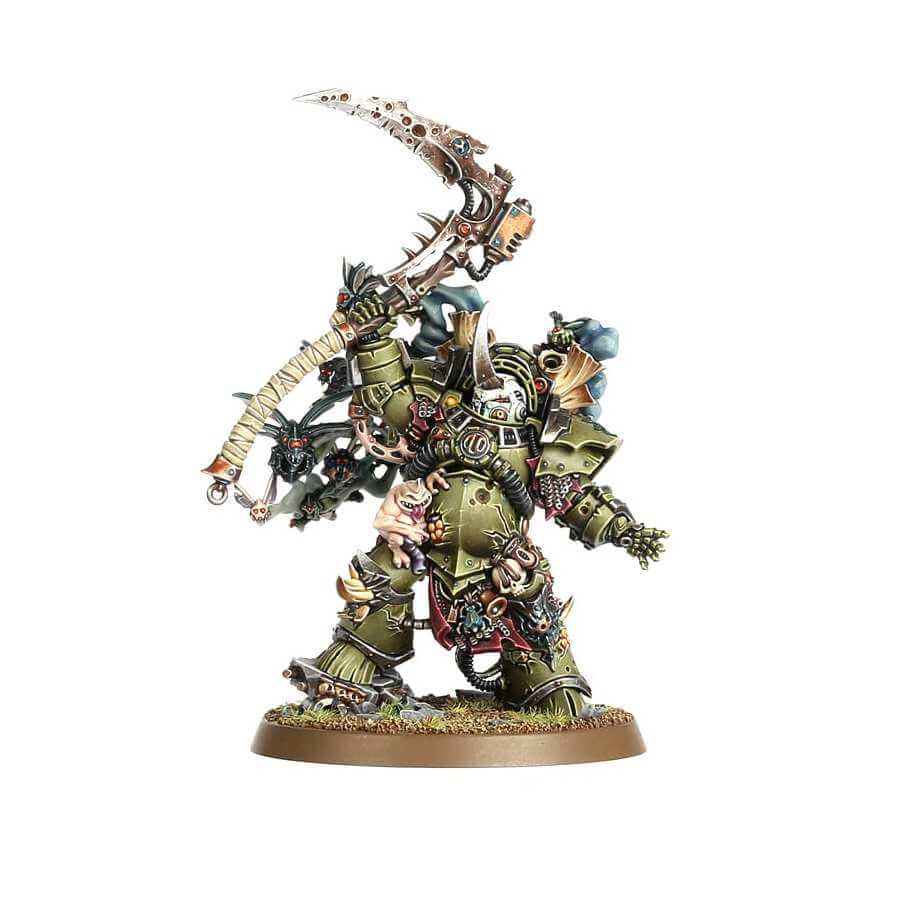
The Death Guard are one of the traitor legions that fell to Chaos, specifically becoming devoted followers of Nurgle, the god of decay and despair. Once proud and resilient warriors, they are now embodiments of corruption and pestilence.
They are known for their unyielding endurance and ability to wage warfare in the most horrific and toxic conditions, a reflection of Nurgle’s blessings. The Death Guard revel in decay and use biological and chemical weapons like no other faction.
Their primarch, Mortarion, personifies this resilience and bitterness, leading his marines not only in battle but in their worship of Nurgle, furthering their descent into despair and rot.
The Plague Marines, the core of the Death Guard, are festering, putrescent warriors bearing the disgusting yet terrifying gifts of Nurgle, making them uniquely horrifying on the battlefield.
Playing a Death Guard Army – Pros and Cons
| Pros | Cons |
|---|---|
| Exceptional resilience and durability in units. | Slower movement compared to other factions. |
| Potent plague-based weaponry and psychic powers. | Specific strategies might be predictable to opponents. |
| Units can shrug off damage and debuffs easily. | Heavy reliance on synergies can complicate army building. |
| Unique units with Nurgle thematic abilities. | Less effective at rapid assault and maneuver warfare. |
| Rich, pestilence-themed lore with unique aesthetics. | Detailed models require advanced painting skills for best effect. |
On the tabletop, the Death Guard are known for their exceptional durability and slow, relentless advance. They can shrug off wounds and damage that would obliterate lesser warriors, thanks to their disgustingly resilient nature.
This makes them a tough army to wear down, reflecting their theme of inevitable decay and endurance. Their units often carry plague weapons that not only deal devastating damage but can also spread debilitating effects, weakening enemy forces over time.
The Death Guard’s playstyle is methodical and inexorable, advancing under the cover of blight bombardments and unleashing volleys of plague-ridden firepower.
While not the fastest or most agile force, their ability to maintain their strength even under heavy fire and their potent, short-range firepower make them a daunting opponent.
Players must balance their slow pace with strategic positioning and take advantage of their ability to endure damage and debilitate enemies to break the opponent’s lines and claim victory amidst a tide of decay.
World Eaters
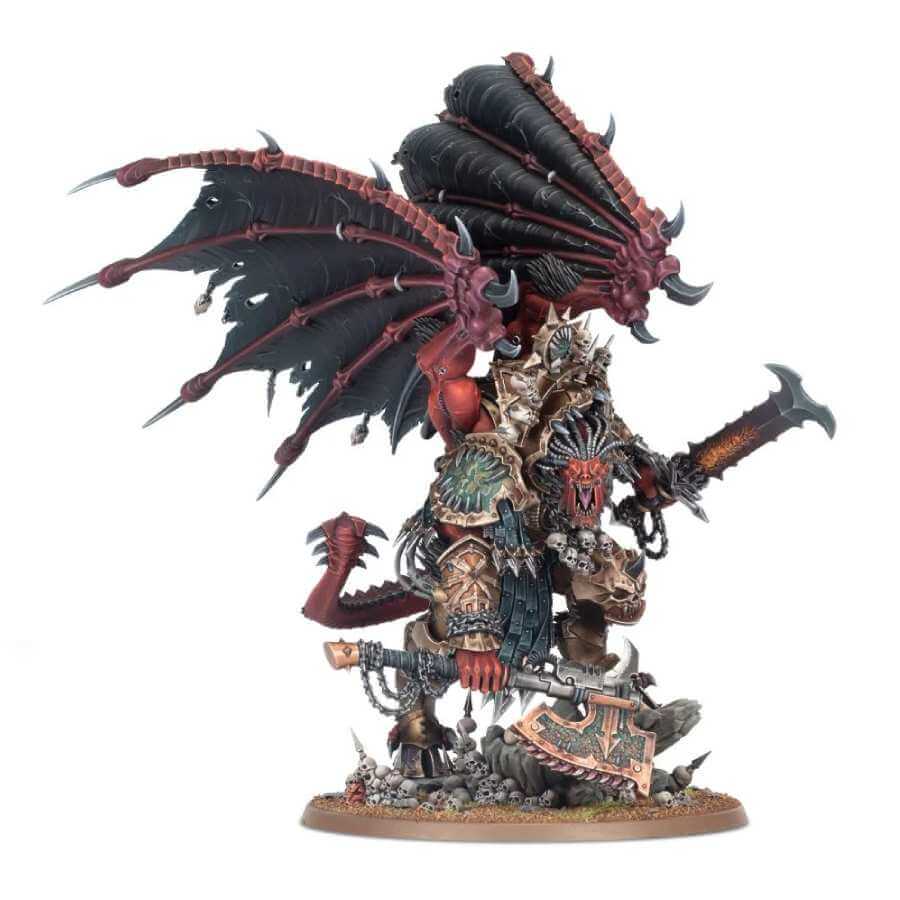
The World Eaters, known as the Blood God’s Legion, are one of the most feared and violent of the Chaos Space Marine factions. Devotees of Khorne, the god of war and bloodshed, they are driven by an insatiable need for carnage and destruction.
Unlike their more disciplined counterparts, World Eaters are frenzied warriors who excel in close combat, seeking to earn the favor of their god with every skull taken.
Key characters like their primarch, Angron, embody this rage and despair, showcasing the tragic fall from noble warriors to berserk killers.
Their infamous Butcher’s Nails implants push them further into madness, amplifying their aggression and pain, making them distinctly different in their approach to warfare and life compared to other factions.
World Eaters Tabletop Characteristics:
| Pros | Cons |
|---|---|
| Supreme melee combatants with fierce close-combat capabilities. | Limited ranged firepower and tactical versatility. |
| Access to devastating berserker units like Khorne Berzerkers. | May struggle against well-fortified or highly mobile enemies. |
| Powerful character buffs and fearless in battle. | Over-reliance on charging can lead to predictable strategies. |
| Enhanced abilities from Khorne, favoring aggression. | Vulnerable to psychic attacks and long-range firepower. |
| Iconic, bloodthirsty aesthetic with rich lore. | Complex model details demanding high painting skill. |
World Eaters are aggressive and relentless, specializing in swift and brutal close-combat assaults. Units like Khorne Berzerkers are iconic, feared for their ability to charge into combat multiple times and decimate enemy lines with a flurry of chainaxe and chainsword attacks.
Unlike the disciplined and heavily armored approach of the Adeptus Custodes, World Eaters favor speed and ferocity, often at the expense of their own safety.
They lack the defensive capabilities of other factions but make up for it in sheer offensive power and the ability to overwhelm opponents with a tide of rage-filled warriors.
Their leaders, such as Chaos Lords and Daemon Princes, are pivotal in directing this fury and granting potent buffs, further enhancing their destructiveness.
However, their reliance on close combat and aggression can be a double-edged sword, requiring players to manage their fury and position their units carefully to avoid premature losses and ensure they reach the enemy lines to unleash their devastating assaults.
Related:
Thousand Sons
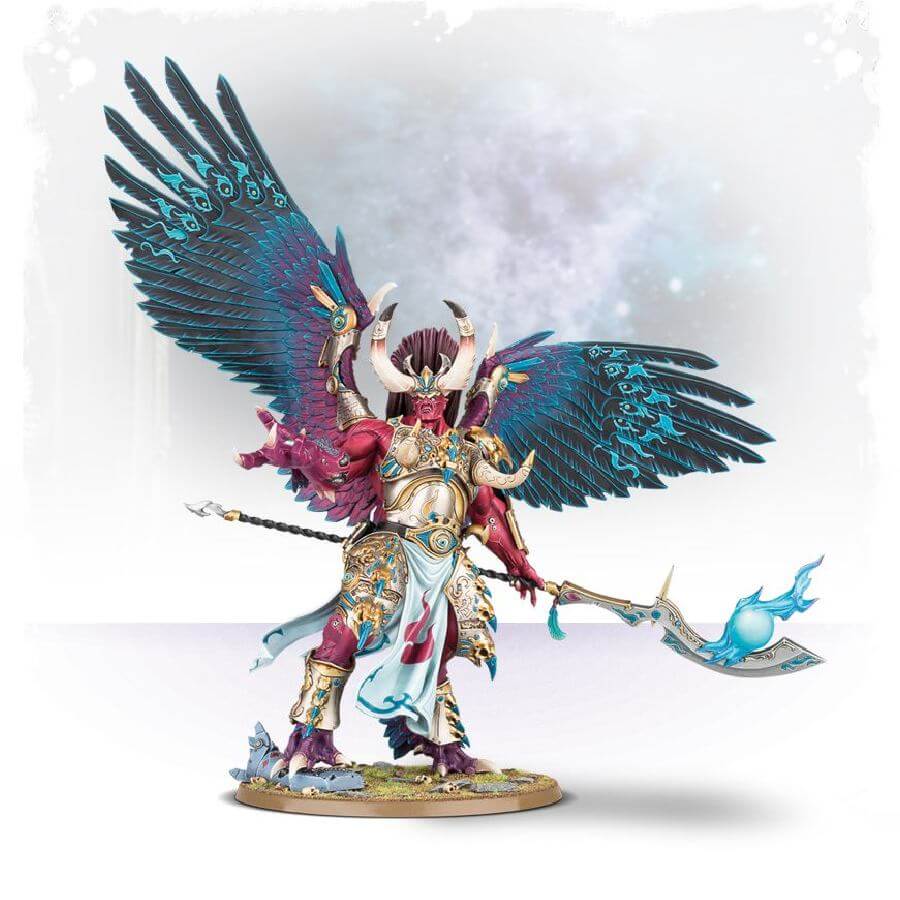
The Thousand Sons are a legion steeped in sorcery and ancient knowledge, once led by their enigmatic and powerful Primarch, Magnus the Red. Known for their pursuit of arcane lore, they fell to Chaos, particularly aligning with Tzeentch, the Changer of Ways.
This patronage gives them a mastery over psychic powers unmatched by any other legion. The tragic tale of the Thousand Sons involves their quest for knowledge turning into a curse, as their flesh turned to dust, and they were bound in their ornate armor.
Now, they are a legion of sorcerers and walking arcane relics, their Rubric Marines silent except for the battle and the whispered incantations of their sorcerous masters.
The Thousand Sons are distinct with their Egyptian-themed armor and extensive use of psychic powers, making them a starkly different force both aesthetically and tactically.
Thousand Sons on the Tabletop – Pros and Cons
| Pros | Cons |
|---|---|
| Mastery over psychic powers, enhancing battlefield control. | Relatively fewer units, focusing on quality over quantity. |
| Access to powerful sorcerers and unique daemon units. | High points cost for elite psykers and specialized units. |
| Durable Rubric Marines with strong defenses against psychic attacks. | Specific counters can exploit their reliance on psychic phase. |
| Varied, potent spells that can impact multiple phases of the game. | Can struggle in scenarios demanding rapid mobility or physical might. |
| Rich, arcane lore with distinctive Egyptian-themed aesthetics. | Complex painting schemes and model details for hobbyists. |
The Thousand Sons faction are a force that relies heavily on their psychic abilities. Almost every unit in the army can harness the warp to cast spells, making them incredibly versatile and capable of a wide array of magical effects, from devastating enemy units to bolstering their own forces.
Their signature Rubric Marines are resilient to enemy magic thanks to their all-is-dust rule and are armed with inferno bolters that can incinerate foes.
The Sorcerers, including the powerful Exalted Sorcerers, are the linchpins of any Thousand Sons army, using their potent psychic powers to shift the tide of battle.
Their daemon engines and Tzaangors add further variety and strength to their ranks, offering more direct combat power and utility.
Related:
Chaos Daemons
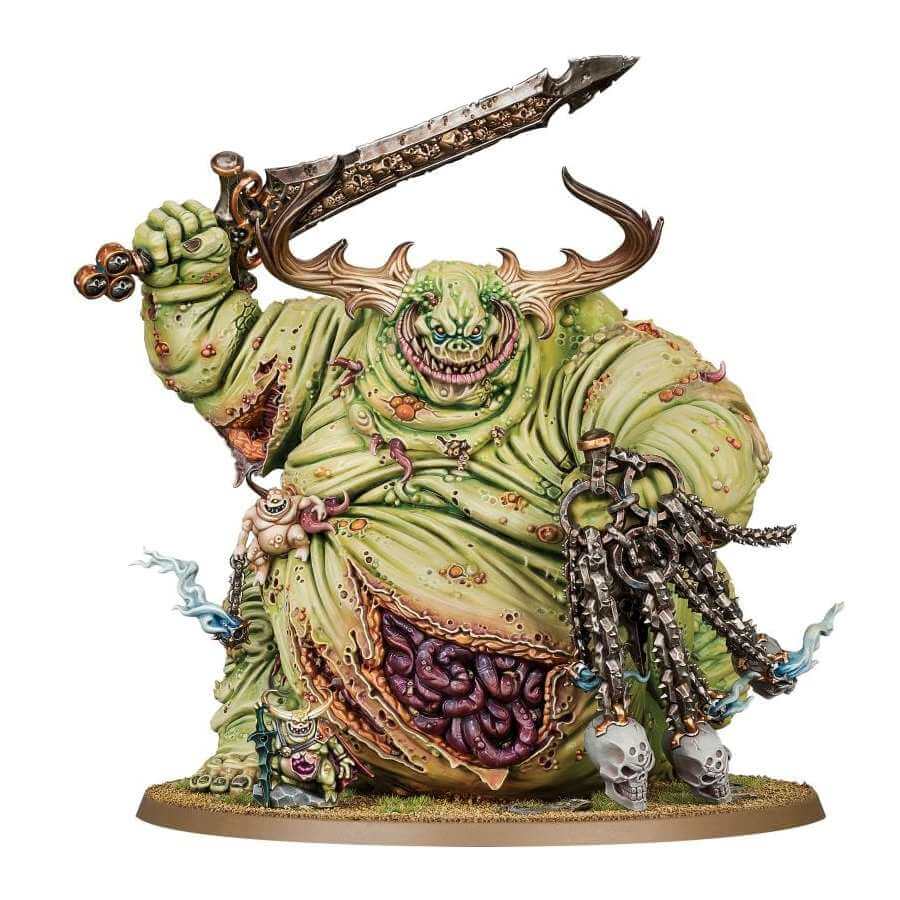
Chaos Daemons are the malevolent entities of the Warp, reflecting the emotions and sins of all sentient beings.
They serve the Chaos Gods: Khorne, Tzeentch, Nurgle, and Slaanesh, each daemon embodying aspects of their patron’s nature, from rage and decay to change and excess.
Not truly alive, they are the will of the Chaos Gods made manifest, spilling into reality to spread corruption and destruction.
Key characters include daemon princes and the infamous greater daemons like Bloodthirsters, Lords of Change, Great Unclean Ones, and Keepers of Secrets, each a terrifying embodiment of their god’s power.
Chaos Daemons Tabletop Characteristics – Pros and Cons
| Pros | Cons |
|---|---|
| Vast array of units with god-specific powers and traits. | Complexity in managing synergies between various daemon types. |
| Unmatched flexibility with access to all four Chaos gods’ units. | Certain units can be expensive in points, limiting army size. |
| Potent psychic abilities and battlefield manipulation. | Susceptible to factions with strong anti-daemon capabilities. |
| Can summon reinforcements directly onto the battlefield. | Reliance on psychic powers and summoning can be disrupted. |
| Rich, diverse lore offering a wide range of modeling opportunities. | Varied model aesthetics require diverse painting skills and techniques. |
Chaos Daemons are a diverse and unpredictable force on the tabletop, with units varying dramatically in appearance and function based on their aligned Chaos God.
They range from horde-like Nurglings to mighty Bloodthirsters, with abilities and tactics reflecting their god’s nature. They excel in melee combat, psychic prowess, or debilitating enemy forces, depending on the type.
However, they typically lack durability and are susceptible to morale losses due to their daemonic instability.
Each daemon type brings a unique blend of strengths and challenges, requiring players to embrace the chaos and unpredictability of these otherworldly horrors.
Related:
Chaos Knights
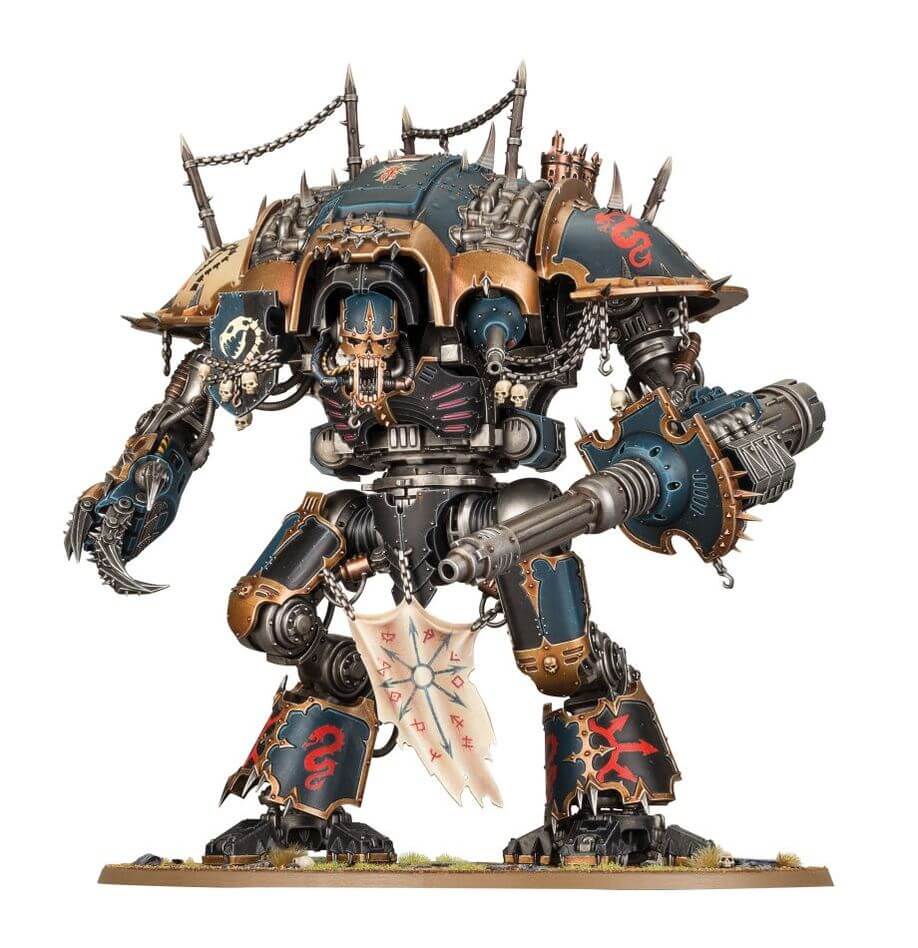
Chaos Knights are towering engines of destruction, piloted by fallen nobles who have sworn their allegiance to the Dark Gods.
These twisted counterparts to the noble Imperial Knights bring desolation with each step, fueled by their pilots’ insatiable lust for power, glory, and carnage.
Once noble houses, now they revel in devastation, wielding ancient, corrupted technology. They are terror incarnate on the battlefield, feared across the galaxy.
They are giant war machines, standing up to 4 times the height of a Space Marine, and they are armed with a variety of powerful weapons, from chainswords to battle cannons.
Chaos Knights are highly mobile, and their immense size makes them difficult to take down. They can shrug off small arms fire and can deal devastating damage to enemy infantry and vehicles alike.
In the Chaos Knights faction, key units include the Knight Desecrator and the Knight Rampager, both specialized for different aspects of warfare and corrupted to serve the dark gods
Playing as the Chaos Knights – Pros and Cons
| Pros | Cons |
|---|---|
| Immense firepower and resilience. | High points cost per unit limits army size. |
| Terrifying presence on the battlefield. | Lower unit count makes each loss more impactful. |
| Access to devastating daemon engines and weaponry. | Can struggle with objectives that require more units. |
| Can align with specific Chaos gods for added abilities. | Less tactical flexibility due to reliance on few powerful units. |
| Iconic, intimidating models with detailed lore. | Complex, expensive kits requiring advanced modeling skills to assemble and paint. |
On the tabletop, Chaos Knights are formidable units known for their devastating weaponry and resilience. Each Knight can be a linchpin in your army, capable of laying waste to entire squads with each round.
While they offer immense firepower and can dominate large swathes of the battlefield, their high points cost and size make them prime targets.
Players often build strategies around them, using them to spearhead assaults or defend key positions. Their effectiveness is unparalleled, but losing one can be a significant blow due to their value and impact.
Related:
The Xenos Races in W40K
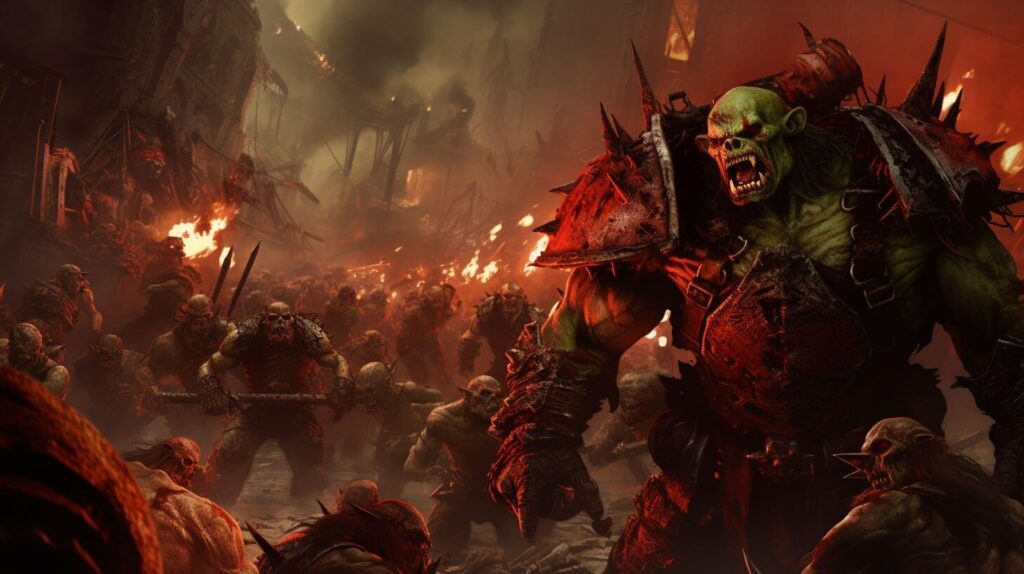
In the foreboding expanse of the Warhammer 40K universe, the Xenos races emerge as powerful foes to the Imperium of Man (and everyone else for that matter).
Ranging from the telepathic Eldar and savage Orks to the unyielding Tyranids and cryptic Necrons, each race introduces distinct dangers and enigmas.
While this article collectively refers to them as “Xenos”, it’s important to note that in the narrative and history of W40K, these factions are unrelated and antagonistic towards each other, just as much as they are towards the Space Marines or the Chaos forces.
The Necrons
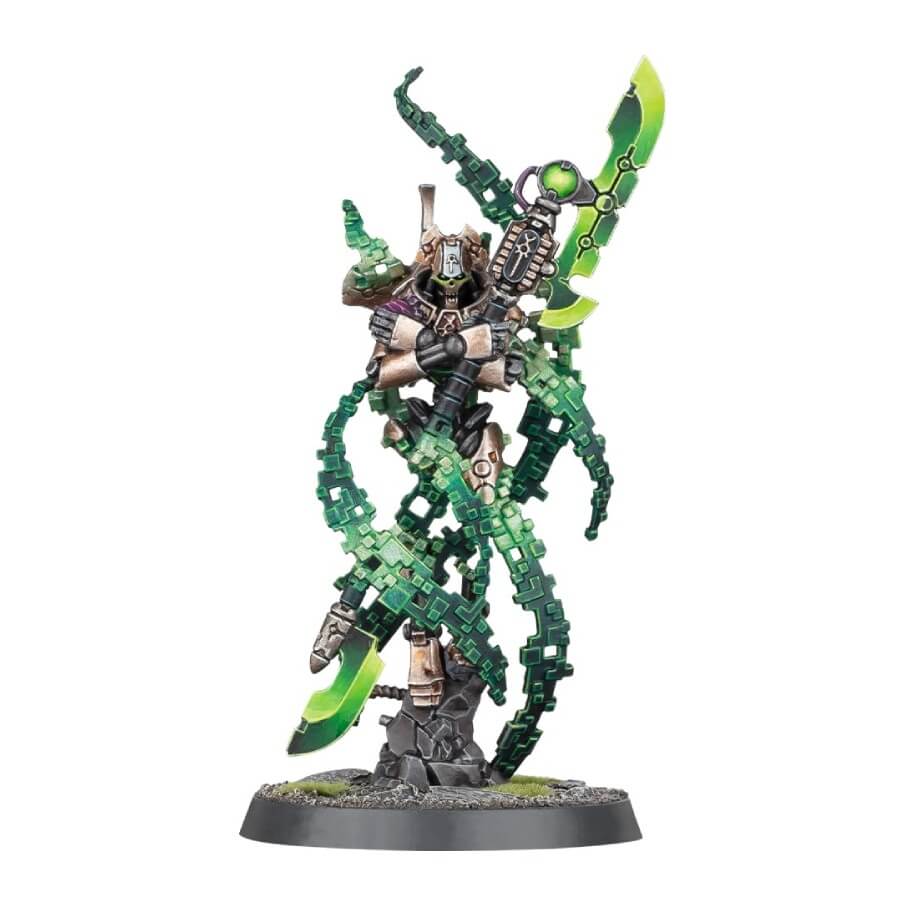
The Necrons are an ancient race of skeletal robots, awakened from eons of slumber to reclaim the galaxy. Each Necron is a near-immortal being, remnants of a once organic race who transferred their consciousness into metal bodies to achieve immortality.
Led by their undying rulers, the Phaerons, and notable characters like the Silent King, they are driven to restore their lost dominion.
Their technology is arguably the most advanced, often defying the known laws of physics, and they are feared across the cosmos for their relentless, emotionless campaigns to eradicate all life.
They spent millions of years in stasis, waiting for the right moment to rise and retake their rightful place as the galaxy’s overlords. Now, they have awoken and are ready to reclaim what is rightfully theirs.
Necrons on the Table Top – Pros and Cons
| Pros | Cons |
|---|---|
| High resilience with reanimation protocols. | Slower movement compared to other factions. |
| Advanced technology offering powerful weaponry. | Reliance on ranged units for strategic success. |
| Unique Reanimation abilities and tactics disrupting enemy plans. | Can be vulnerable to psychic and anti-tank warfare. |
| Iconic, ancient Egyptian-inspired aesthetics. | Complexity in synergy and unit optimization. |
Necron armies can be built around their dynasties. Necron Dynasties are the ruling factions within the Necron race in Warhammer 40,000.
Each dynasty has its own unique personality, culture, and methods of warfare. Some of the most notable dynasties include the Sautekh Dynasty, the Nihilakh Dynasty, and the Mephrit Dynasty.
On the tabletop, Necrons are known for their incredible durability and ability to self-repair, often coming back from wounds that would destroy other units entirely.
Key units include the Necron Warriors, Immortals, and the fearsome Monoliths, along with powerful characters like the Overlord. Their weaponry often has devastating effects, like the gauss flayers’ ability to strip matter molecule by molecule.
Other powerful units are the C’tan Shards – remnants of the star gods the Necrons once worshipped and then shattered. On the tabletop, C’tan Shards are among the most powerful units, capable of devastating psychic-like powers, and are feared for their ability to manipulate the battlefield and deal massive damage.
The downside of the Necrons is their typically slow movement and sometimes predictable strategies, but their resilience and firepower make them a force to be reckoned with.
Related:
- Complete list of Necrons Miniatures and Models
- 10th Edition Necrons Codex
- 10th Edition Necrons Datasheet Cards
The Eldar
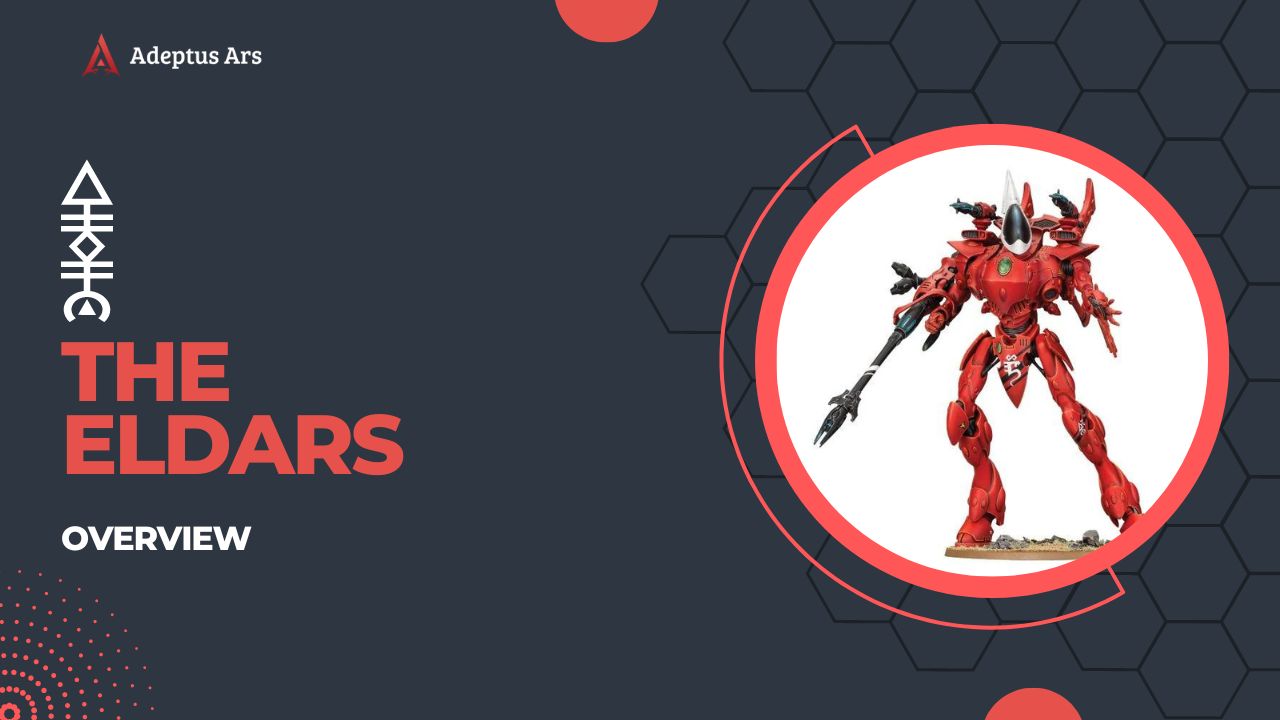
The Eldar, or Aeldari as they’re also known, are an ancient and highly advanced alien race. Once rulers of a vast empire, their civilization fell into decadence, leading to a cataclysmic event that birthed the Chaos God Slaanesh.
Now scattered in craftworlds across the galaxy or leading piratical lives as Drukhari in the dark city of Commorragh, they fight for survival and the restoration of their former glory.
Known for their psychic prowess and sophisticated technology, they are divided into various factions like Asuryani of the craftworlds and the Drukhari from Commorragh, each with their own distinct culture and fighting style.
In Warhammer 40,000 Lore, they are divided into several sub-factions such as the Craftworld Eldar, the Harlequins and the Dark Eldar.
Playing as the Eldar – Pros and Cons
| Pros | Cons |
|---|---|
| Highly mobile with fast units and transports. | Generally less durable units, vulnerable to heavy fire. |
| Potent psychic abilities across many units. | Psychic reliance can be countered by specific factions or units. |
| Wide variety of specialized units for tailored strategies. | Specialization means units can be less versatile individually. |
| Effective at long-range engagements with powerful shooting options. | Can struggle in close combat against more melee-focused armies. |
| Rich lore and elegant, distinctive model aesthetics. | Complex paint schemes may challenge hobbyists. |
On the tabletop, Eldar units are generally fast, highly skilled, and equipped with potent psychic abilities. They can field a variety of units, from the swift Jetbike-mounted Windriders to the powerful Wraith constructs.
Key characters like Eldrad Ulthran, a master Farseer, provide strategic and psychic advantages. Eldar forces are known for their hit-and-run tactics and require precise, strategic play to take advantage of their strengths and mitigate their fragility.
Each unit is typically specialized and potent, but Eldar armies often lack the resilience of other factions and can be unforgiving of mistakes.
The Aeldari are currently the top faction by win-rate in professional Warhammer 40000 matches, as per the most recent Metawatch update!
Related:
Drukhari or Dark Eldars
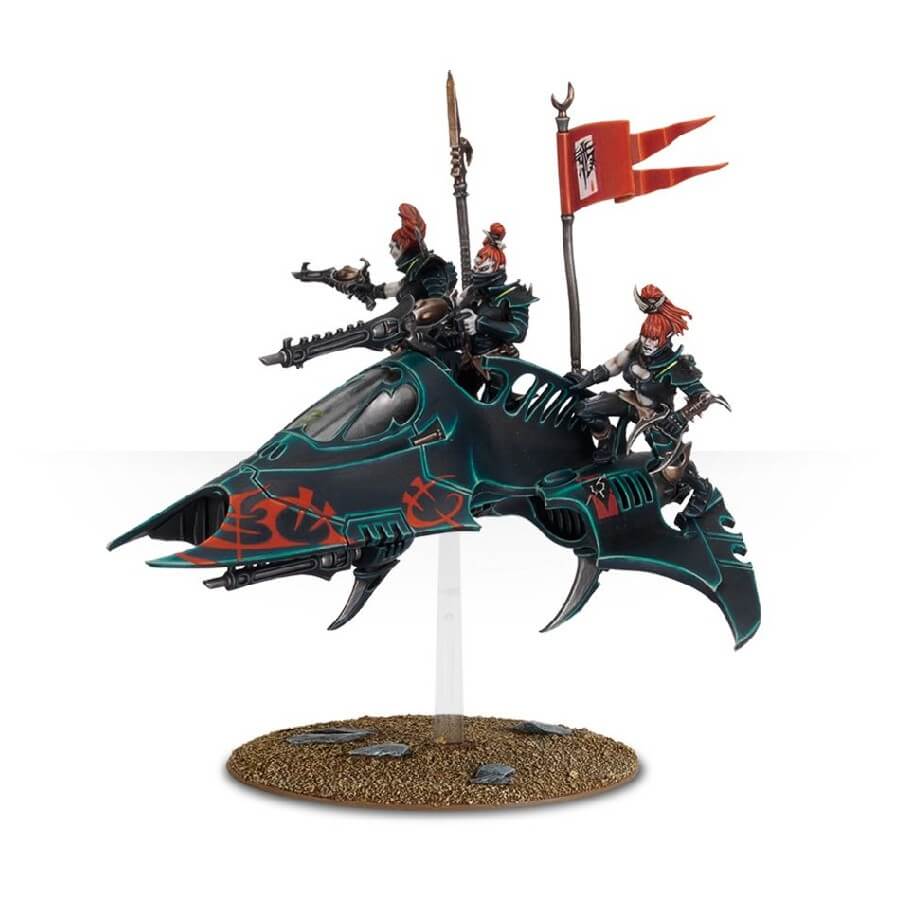
The Drukhari, also known as Dark Eldar, are the twisted and sadistic kin of the Aeldari, known for their piratical raids and cruelty.
They reside in the dark city of Commorragh, a place as deadly as its inhabitants. Unlike their Craftworld counterparts, they do not shy away from the darker aspects of their psyche, embracing it instead to stave off the predations of Slaanesh.
Key characters include Asdrubael Vect, the supreme overlord of Commorragh, and Lelith Hesperax, a renowned gladiatrix.
Playing the Dark Eldars on Tabletop – Pros and Cons
| Pros | Cons |
|---|---|
| Exceptional speed and agility across units. | Fragile units with lower toughness. |
| Specializes in hit-and-run tactics. | Can be outmatched in prolonged engagements. |
| Access to a wide array of poisons and traps. | Dependence on synergy and timing for maximum effect. |
| Potent raiding capabilities with fast strikes. | Strategy can be countered by heavy firepower or fast reaction forces. |
| Dark, piratical aesthetic with rich lore. | Complex models and intricate details may challenge hobbyists. |
On the tabletop, Drukhari are fast, fragile, and hit hard, specializing in lightning raids and excelling in bringing pain and misery to their enemies with a wide array of poison and quick-strike capabilities.
They are distinct from other Aeldari factions in their reliance on slave-taking, torture, and their unique reliance on suffering to sustain their longevity.
The Drukhari are a highly mobile army that excels at hit-and-run tactics. They rely on their speed and agility to outmaneuver their opponents and strike where they are weakest.
Drukhari unique units include Kabalite Warriors, fast and deadly with a focus on ranged combat; Wyches, gladiatorial fighters excelling in melee; Incubi, fearsome warriors serving as elite bodyguards; and the grotesque Wracks and Talos Pain Engines, embodying their love for torture and bio-experiments.
Related:
Harlequins or Rillietann

Harlequins are the mysterious and enigmatic warriors of the Eldars, known for their acrobatic skills and theatrical flair.
They are the servants of the Laughing God Cegorach, the only Eldar deity to have survived the Fall unscathed. Harlequins see themselves as the keepers of the Eldar’s ancient history, using their performances to retell the tales of their people’s past glories and tragedies.
Their martial role is to strike from the webway, launching precise, deadly attacks and then vanishing without a trace.
Unlike other Aeldari, they eschew traditional paths, instead dedicating their entire existence to the art of war and performance, weaving them together into a lethal dance.
Playing the Harlequins – Pros and Cons
| Pros | Cons |
|---|---|
| Unmatched mobility and speed in battle. | Fragile units with low toughness scores. |
| Superior close-combat capabilities. | Limited range firepower and heavy support. |
| Potent psychic powers and unique abilities. | High skill ceiling for effective play. |
| Can quickly adapt to changing battlefield dynamics. | Vulnerable to massed shooting attacks. |
| Distinctive, colorful aesthetic with rich lore. | Complex models requiring intricate painting. |
On the tabletop, Harlequins are incredibly mobile and hard-hitting, specializing in fast, deadly strikes. They are known for their flip belts allowing them to move unhindered, and their holosuits make them frustratingly difficult for enemies to pin down.
Their units like Troupes, Skyweavers, and Death Jesters, each bring a unique set of skills, making them highly versatile and unpredictable. However, they are also fragile, and every casualty can be acutely felt, requiring careful maneuvering and strategy.
The Shadowseer, a key character, provides psychic support, manipulating the battlefield to the Harlequins’ advantage.
While the Harlequins can be used as a standalone army, they are typically used in conjunction with other Aeldari factions, such as Craftworld Eldar or Dark Eldar. This allows for greater flexibility and strategic options.
Related:
The Orks
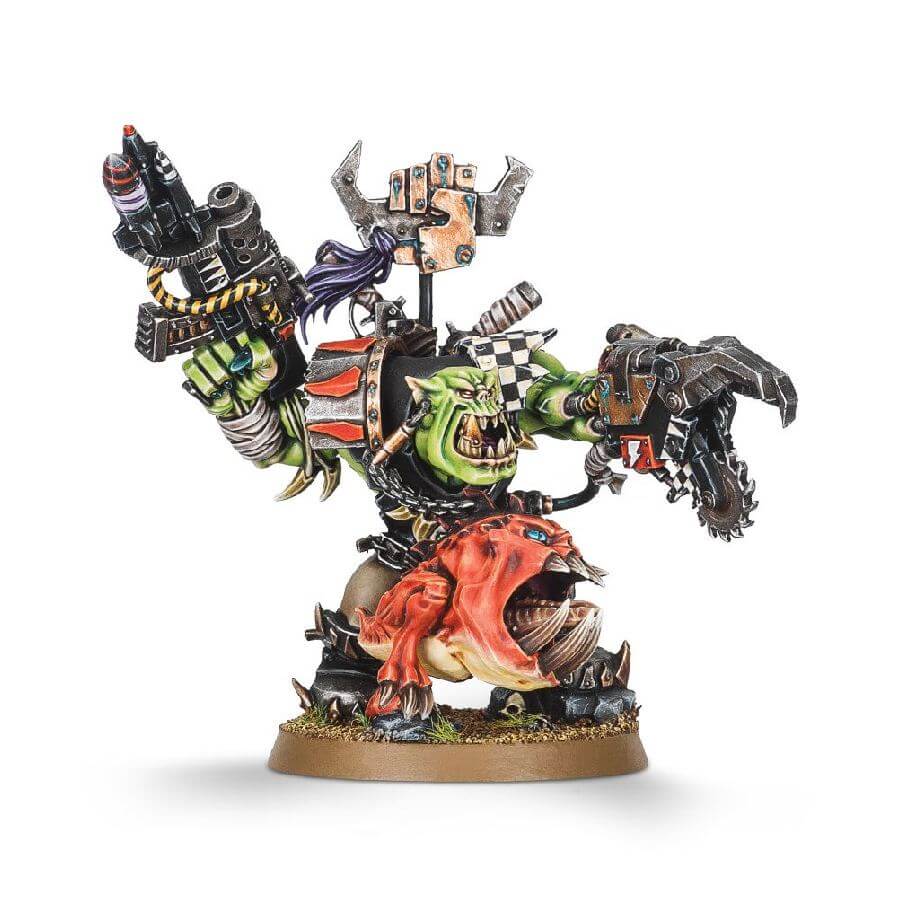
The Orks are a race of brutish aliens that seek only to fight and conquer. They are usually organized into clans or tribes. While tribes are volatile and often break apart and reform during war, Clans are stable and long-lasting.
Only six major Clans exist, each with its own unique features such as colors, markings, culture, and ways of combat. These Clan traits are most likely inherent in the Ork race, implanted by the Brainboys of the distant past.
Orks from various Clans typically come together in large tribes, but after suffering losses in battle, different groups often unite into the same tribe or war band.
Ork clans in Warhammer 40k don’t represent separate armies but rather offer different heraldries and flavors, allowing players to customize their forces to appear distinct while maintaining a cohesive Ork playstyle.
Here’s an overview of the major Ork clans:
| Blood Axes | The Blood Axes are a cunning and sneaky Ork tribe known for their unorthodox tactics and willingness to ally with other races, utilizing a versatile mix of ranged and melee units. |
| Goffs | The Goffs are one of the most brutal and straightforward clans in the Ork hierarchy. They are a melee-focused army that prefers to charge into the enemy and pummel them into submission. |
| Evils Sunz | The Evil Sunz are a tribe of orks who have a reputation for being fast and reckless. They love speed, and they believe that the faster they go, the more they will win. They have a fascination with vehicles, and they are skilled in using them in battle. |
| Bad Moons | The Bad Moons are a wealthy Ork tribe that equates riches with strength, favoring flashy, powerful weaponry like big shootas and rokkits to dominate their foes. |
| Snakebites | The Snakebites excel in close combat, with their warriors armed with powerful melee weapons and shields. They also have access to a range of deadly animals, such as squigs and boars, which they can use to charge into battle. |
| Deathskulls | The Deathskulls are a tribe of orks who are known for their love of looting and scavenging. They believe that anything they can get their hands on is theirs for the taking, and they are often seen with a variety of stolen weapons and equipment. |
Playing the Orks on the Tabletop – Pros and Cons
| Pros | Cons |
|---|---|
| Overwhelming numbers in battle. | Generally low accuracy and weaker individual units. |
| Versatile units for a variety of tactics. | Strategy can be chaotic and hard to control. |
| Strong melee combat and durable characters. | Vulnerable to precise, high-damage ranged attacks. |
| Rich, humorous lore and highly customizable models. | Lack of strong defensive options for many units. |
| Painting and assembling large armies can be time-consuming. |
Orks are a horde army, which means you’ll be fielding a lot of models. When building your army, it’s important to keep in mind that Orks are all about quantity over quality.
On the tabletop, Orks excel in swarming tactics with units like Boyz and Gretchins, overwhelming foes with numbers.
Their strong melee capabilities, exemplified by Nobz or Warbosses, allow for aggressive play. The randomness of Ork technology, like Shokk Attack Guns, adds an element of fun and unpredictability.
Orks’ reliance on numbers often means less effective shooting and lower individual unit durability, requiring massed assaults that can be predictable.
Their technology is unreliable, leading to potential backfires or inconsistencies in battle.
Related articles:
The Tyranids
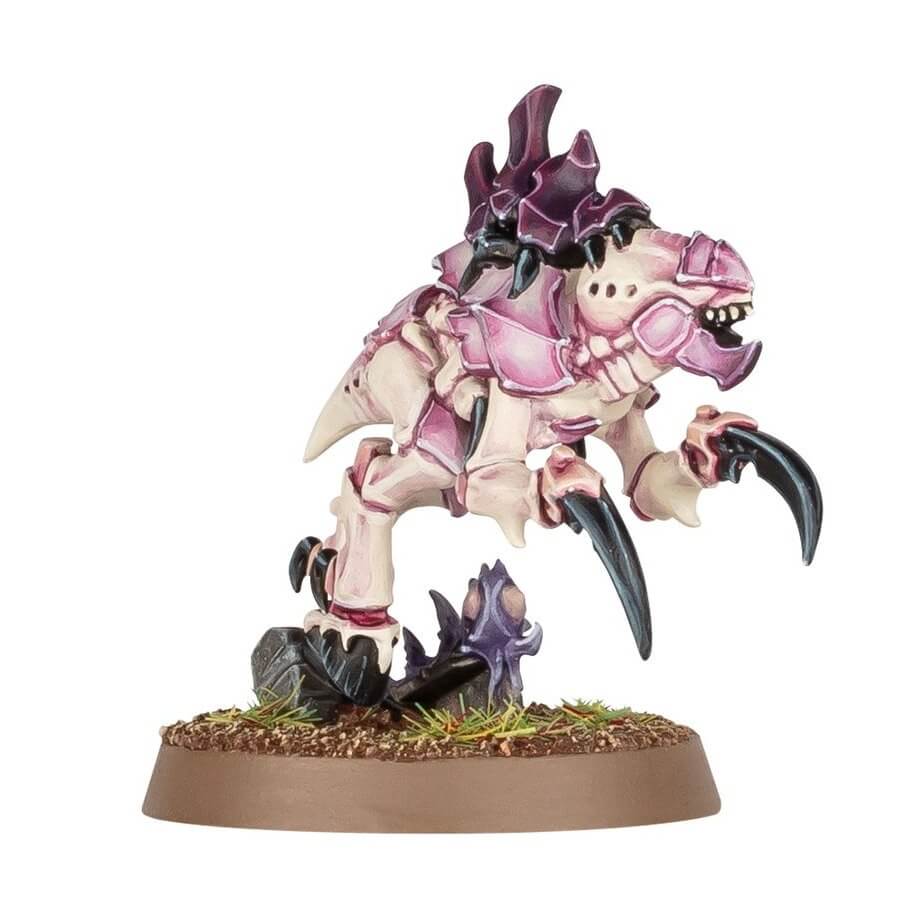
Tyranids are a nomadic alien race from outside the Milky Way, believed to travel between galaxies consuming all biomatter.
Originating from unknown regions of space, they adapt and evolve with terrifying speed, making them a near-unstoppable force. Each Tyranid creature is psychically linked, creating a collective consciousness known as the Hive Mind, guiding them as they relentlessly seek new worlds to devour.
Their arrival is often heralded by shadow in the warp, a psychic phenomenon that disrupts travel and communication, making them a dreaded and mysterious threat in the Warhammer 40k universe.
Playing the Tyranids – Pros and Cons
| Pros | Cons |
|---|---|
| Vast swarms allow for overwhelming force. | Units can be susceptible to high-powered weaponry. |
| Highly adaptable with evolutionary upgrades. | Reliance on synapse creatures for coordination. |
| Capable of regenerating units and health. | Struggle with ranged engagements against certain foes. |
| Variety of monstrous creatures for versatile strategies. | High-cost powerful units limit numbers on the field. |
| Unique, bio-horror aesthetic with diverse models. | Assembling and painting large hordes may be daunting. |
On the tabletop, Tyranids are known for their numbers, adaptability, and variety of monstrous creatures. They overwhelm opponents through sheer force and terrifying bio-organisms like Genestealers and Carnifexes.
Unlike other factions focusing on technology or psychic might, Tyranids rely on instinctual brutality and bio-engineered prowess, offering a playstyle focused on adaptation and assault.
Their unique synapse mechanic represents the Hive Mind’s control, requiring strategic positioning to maintain the swarm’s effectiveness. Each loss is merely a small part of a much larger organism, making them vastly different from more individualistic factions.
Tyranids are suited for players who enjoy overwhelming their opponents with large numbers of units and revel in the adaptability and variety of monstrous creatures. They’re great for those who appreciate a swarming, aggressive playstyle and enjoy managing many units with diverse biomorphs and strategies.
In the latest edition of W40K, the Tyranids’ Detachments, Rules and Stratagems are designed to support variations of that playstyle. “Unending Swarm” for instance, is perfect for players who like to exhaust their enemies while “Assimilation Swarm” is great if you like using your enemy’s strengths against them.
Related:
- Complete list of Tyranids Miniatures and Models
- 10th Edition Tyranids Codex
- Tyranids 10th Edition Datasheet Cards
- 10th Edition Tyranids Detachments Overview
Genestealer Cults
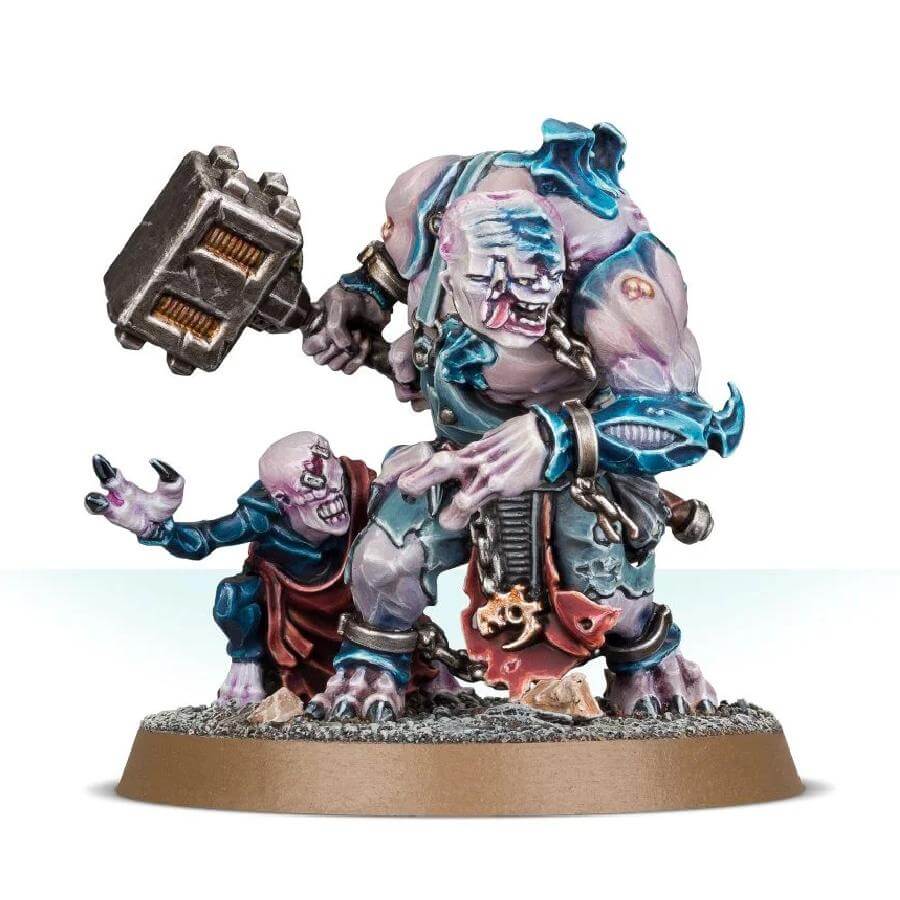
Genestealer Cults represent the insidious spread of the Tyranid influence, infiltrating societies as a vanguard of the Great Devourer.
They start as small infestations that gradually overthrow their host society from within. Cult members are fanatically devoted, and their ranks are filled with hybrids of humans and Tyranids, each generation becoming more alien.
They are characterized by their secrecy, subterfuge, and sudden, overwhelming uprisings, making them a terrifying internal threat.
Genestealer Cults on the Tabletop – Pros and Cons
| Pros | Cons |
|---|---|
| Ambush tactics allow for surprise attacks. | Fragile units, vulnerable in direct combat. |
| Access to a mix of Imperial and Tyranid units. | Complex army synergy requires careful planning. |
| Infiltration units disrupt enemy lines early. | Heavy reliance on getting close to be effective. |
| Psychic powers and unique cult abilities. | Can struggle against highly mobile or armored foes. |
| Rich, subversive lore with a unique aesthetic. | Detailed and varied models require a lot of hobby work. |
On the tabletop, Genestealer Cults are known for their ambush tactics and ability to disrupt enemy plans with unexpected assaults.
They have a wide variety of units, including Neophyte Hybrids, Acolyte Hybrids, the iconic Purestrain Genestealers, and powerful characters like the Patriarch.
Their unique mechanic of setting up blips that can turn into units allows for surprising and strategic deployment.
However, they typically lack the durability and straightforward firepower of other factions, relying instead on cunning, speed, and overwhelming numbers at the right moment.
Their playstyle is distinctively different from other factions, focusing on deception and sudden strikes.
Related:
The T’au Empire
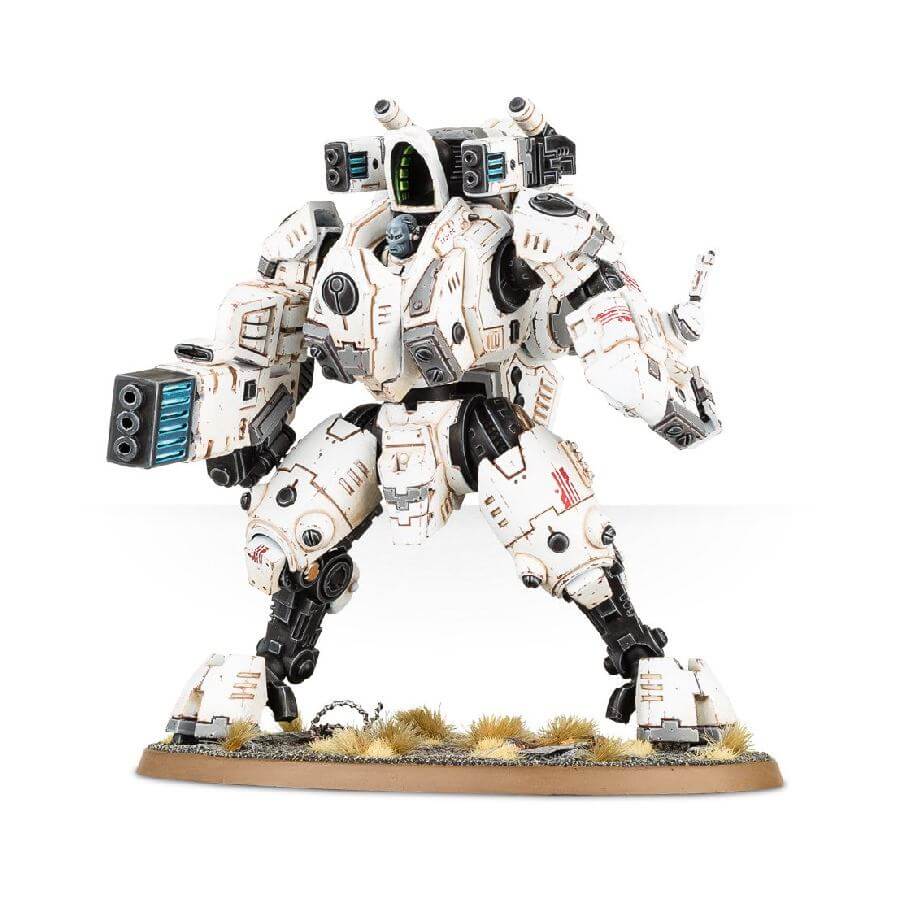
The T’au Empire is a younger, rapidly expanding faction known for their advanced technology and unique philosophy of the Greater Good.
Unlike the other war-torn races of the galaxy, the T’au seek to unite different species, including humans, under a single banner of progress and cooperation.
They are notable for their ranged combat prowess, utilizing highly advanced weaponry and battlesuits. Key characters include Commander Shadowsun and Ethereal Aun’Va, who embody the T’au’s strategic and philosophical leadership, respectively.
T’au Empire Tabletop Characteristics:
| Pros | Cons |
|---|---|
| Superior ranged firepower and technology. | Lack of psychic abilities and close combat prowess. |
| Highly mobile with advanced suits and vehicles. | Units can be costly in points, affecting army size. |
| Strong support systems and drones for flexibility. | Dependent on synergy between units for effectiveness. |
| Effective at controlling battlefield zones. | Vulnerability to fast, melee-focused armies. |
| Distinct, futuristic aesthetic with diverse models. | Requires strategic positioning and planning for success. |
On the tabletop, T’au forces are renowned for their powerful shooting capabilities and mobility. Their battlesuits, like the XV8 Crisis Suits and the formidable Riptide, offer versatile and devastating firepower.
They employ drones for additional support and firepower, making them unique compared to other factions. However, they generally lack in psychic and close combat areas, relying instead on superior technology and coordinated volleys of fire to overwhelm the enemy.
Their gameplay requires strategic positioning and leveraging their superior range and firepower to control the battlefield.
Related:
The Leagues of Votann
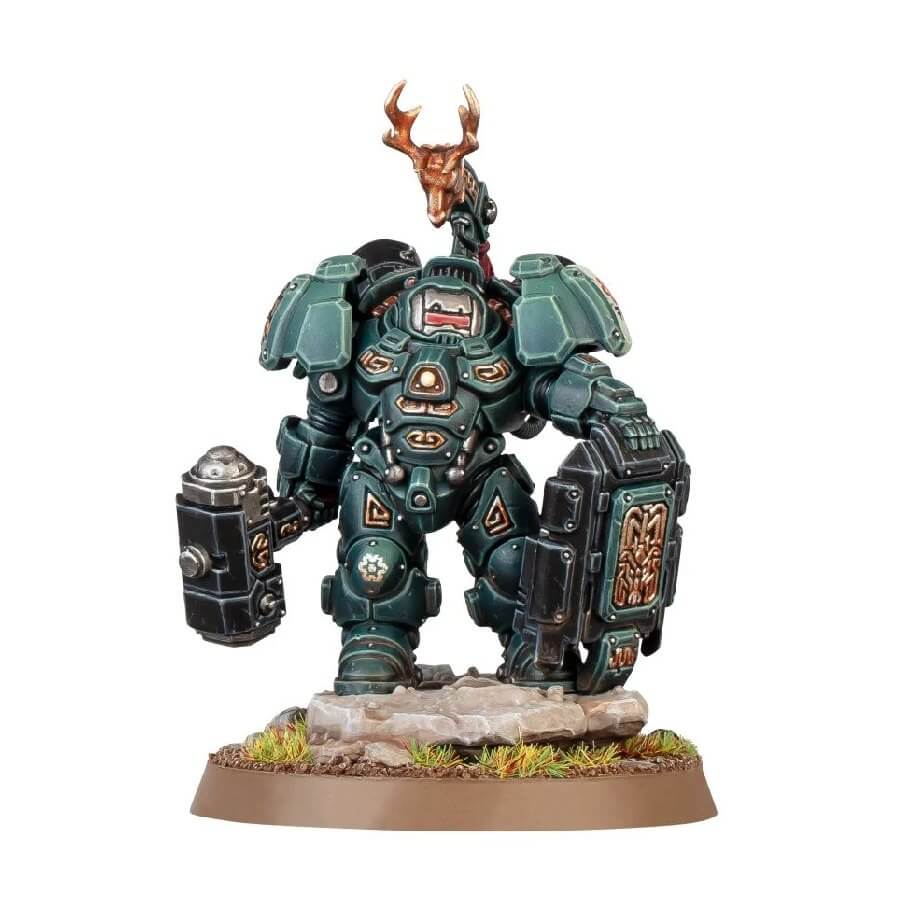
The Leagues of Votann are a recently reintroduced faction in the Warhammer 40k universe, representing a society of hardy, independent, and technologically advanced kin known colloquially as space dwarfs.
Descendants from early human colonists, they’ve diverged significantly from humanity, physically and culturally, under the guidance of ancient Votann computers.
Their society is structured around powerful trade and defense alliances known as Leagues and professional Guilds, uniting the Kindreds and their Holds.
They’re not only known for their genetic enhancements and resistance to the warp but also for their advanced technologies, which include superior weaponry and Ironkin, fully autonomous and integrated members of their society
Playing the Leagues of Votann on the Tabletop – Pros and Cons
| Pros | Cons |
|---|---|
| Advanced technology and strong defensive units. | May have fewer fast, agile units compared to other factions. |
| Potent ranged firepower with unique weapons. | Reliance on technology and specific units for success. |
| Utilizes Judgment tokens for strategic buffs. | Strategy can be predictable with emphasis on ranged combat. |
| Durable key units and characters with impactful lore. | Potentially high points cost for powerful units and tech. |
| Versatile weaponry, including heavy plasma axes and SP Conversion Beamer. | Requires careful planning to maximize unit synergies and token use. |
On the tabletop, the Leagues of Votann are distinguished by their unique combination of advanced technology and robust units.
Their army is characterized by strong defensive capabilities and potent ranged firepower, with units like the Hekaton Land Fortress exemplifying their might.
Key units and characters like Ûthar the Destined and various specialized warriors reflect their lore, focusing on durability and firepower.
They utilize Judgment tokens to gain buffs against adversaries and employ a range of advanced weaponry, from heavy plasma axes to the deadly SP Conversion Beamer, showcasing their unique blend of technology and tenacity in battle.
Related:
Other Sub-Factions in Warhammer 40K
In the vast universe of Warhammer 40k, beyond the major armies lies a tapestry of smaller subfactions, each offering unique units and lore to enrich your battlefields.
These groups, while not having enough units for standalone armies, provide players with specialized options and thematic elements, perfect for customizing larger forces or creating narrative-driven skirmishes.
Dive into the diversity of the 40k universe and discover the depth of choice available to elevate your gaming experience!
Agents of the Imperium
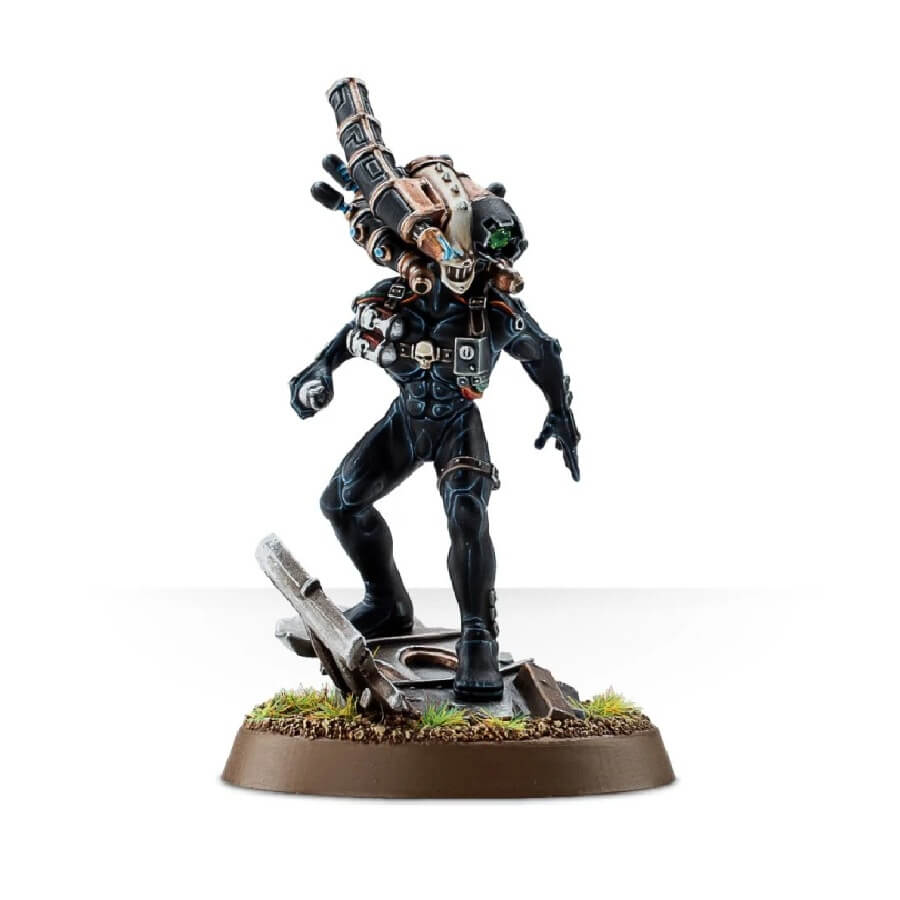
Agents of the Imperium are diverse forces that serve the Imperium’s various interests, including Inquisitors, Assassins, and other individual operatives.
They are the hidden hand of the Emperor, working in the shadows to protect humanity from threats within and beyond. Each agent is a specialist in their field, executing missions of espionage, assassination, and covert operations.
Agents of the Imperium Tabletop Pros and Cons
On the tabletop, Agents of the Imperium are typically used to complement other Imperial forces with their specialized abilities.
They can be powerful in targeted roles but tend to be specific in application and often work best when supporting larger Imperial armies. Their individual abilities can turn the tide of battle, offering unique strategic options.
Related:
Asuryani
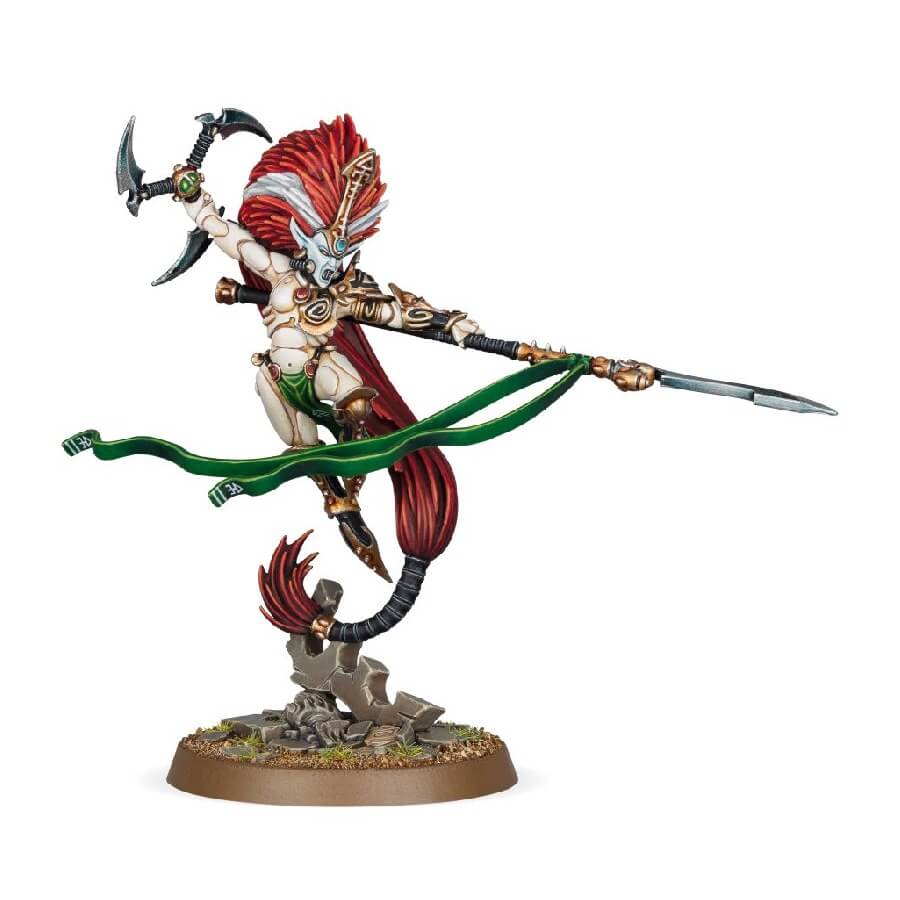
Craftworld Eldar or Asuryani are a sophisticated and psychic race, remnants of a fallen empire, navigating the cosmos in their massive Craftworlds.
A Craftworld is a massive spacecraft, akin to a floating planet. Post their civilization’s fall, these craftworlds serve as the Asuryani’s refuge, drifting through space.
Each is a fully autonomous and culturally unique entity, founded on a framework of psychic wraithbone that permeates its structure, a characteristic shared with all Asuryani architecture and vessels.
Distinct from their dark kin, the Drukhari, or the nomadic Harlequins, the Asuryani follow a path system to control their destructive emotions, avoiding the decadence that led to their race’s near extinction. Eldrad Ulthran of Ulthwé Craftworld is a renowned figure, known for his strategic foresight.
Playing the Craftworld Eldar (Asuryani) on the Tabletop
Craftworld Eldar units are quick, skilled, and wield advanced psychic powers. They emphasize hit-and-run tactics and precision strikes but lack durability. The Dire Avengers offer diverse combat roles, and Wraithguard provides heavy support.
Mastering them requires strategic movement and leveraging their psychic might.
The Ynnari or The Reborn
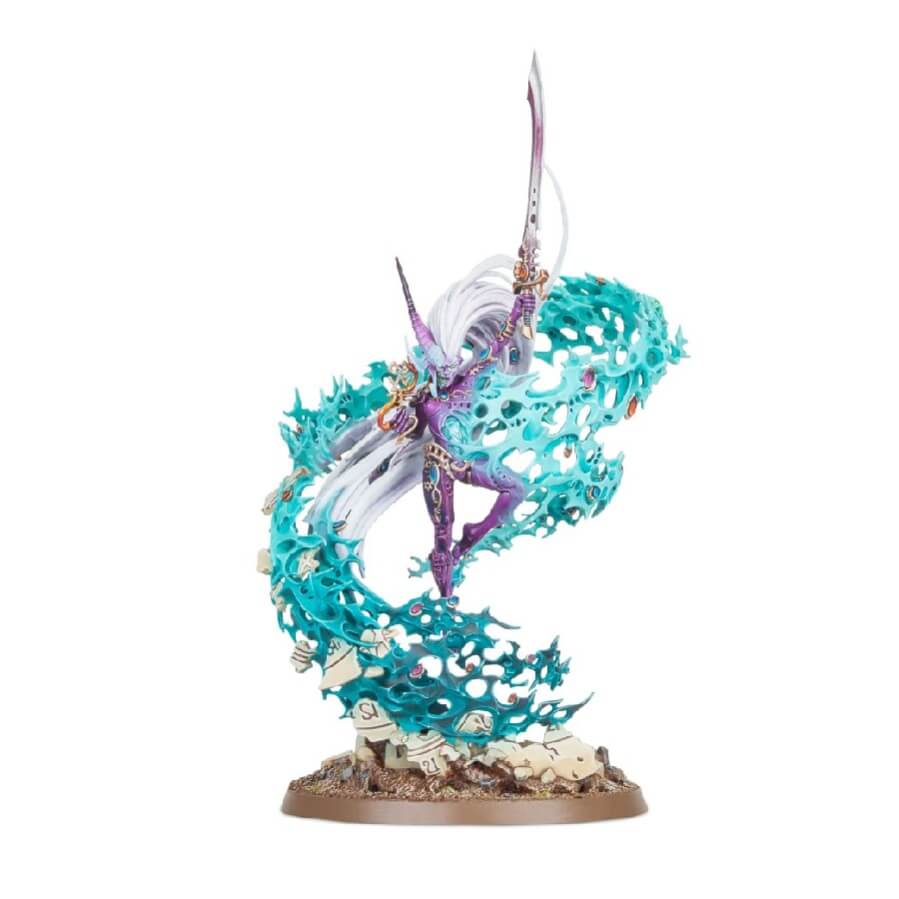
The Ynnari worship the Eldar demigod Ynnead, who represents the Eldar’s collective will to survive and resist the forces of Chaos. They seek to unite the different Eldar factions and awaken Ynnead to defeat Slaanesh, the Chaos God who consumes Eldar souls.
The Ynnari’s playstyle revolves around the use of their unique special rule, Strength from Death, which allows them to gain extra benefits when a unit is destroyed. They can use this rule to gain additional attacks, extra movement, or even to come back to life.
The Ynnari are a versatile eldar sub-faction that can take advantage of their unique special rule to gain unexpected advantages. They can field a mix of units from different Eldar factions, including Harlequins, Craftworlds, and Drukhari.
Related:
Eldar Corsairs or Anhrathe
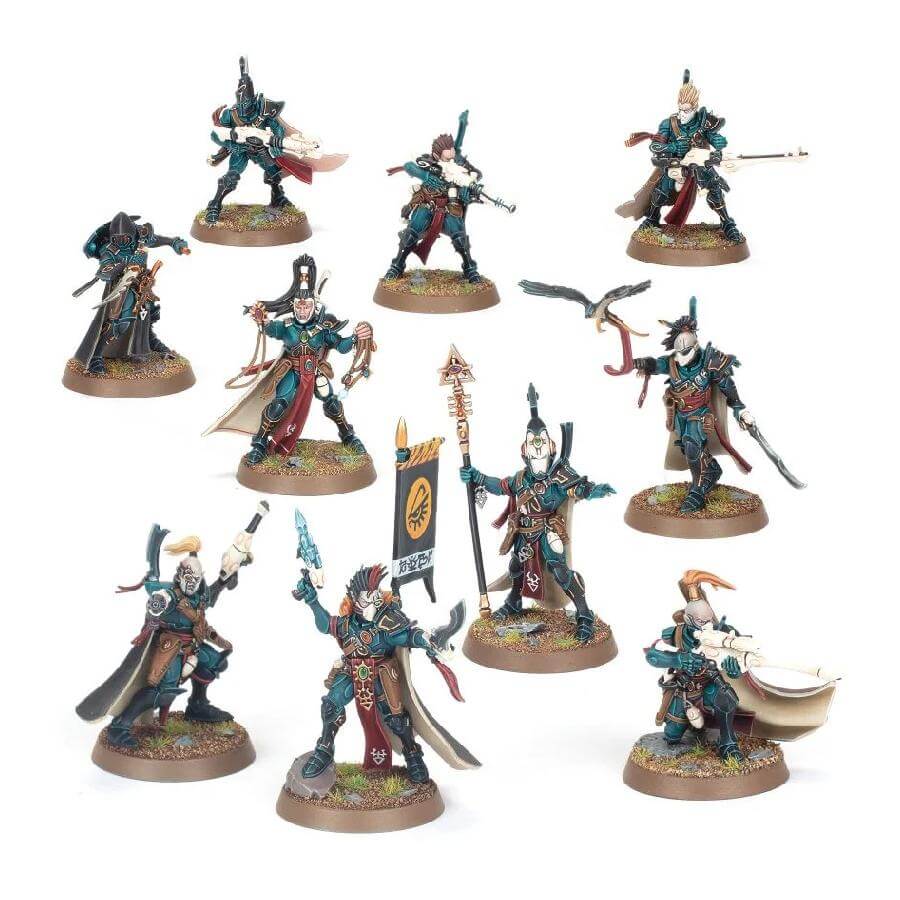
The Eldar Corsairs are a faction of Eldar who have abandoned their Craftworlds and the rigid discipline of their society. They are often pirates and mercenaries, preying on the enemies of the Eldar or selling their services to other factions.
Eldar Corsairs are an elite army, with many units being fast and hard-hitting, but also fragile. They rely on hit-and-run tactics, using their speed to strike at vulnerable targets before quickly retreating.
They also have a focus on psychic powers, with many units being able to manifest powers such as Smite or Doom.
The Lost and the Damned
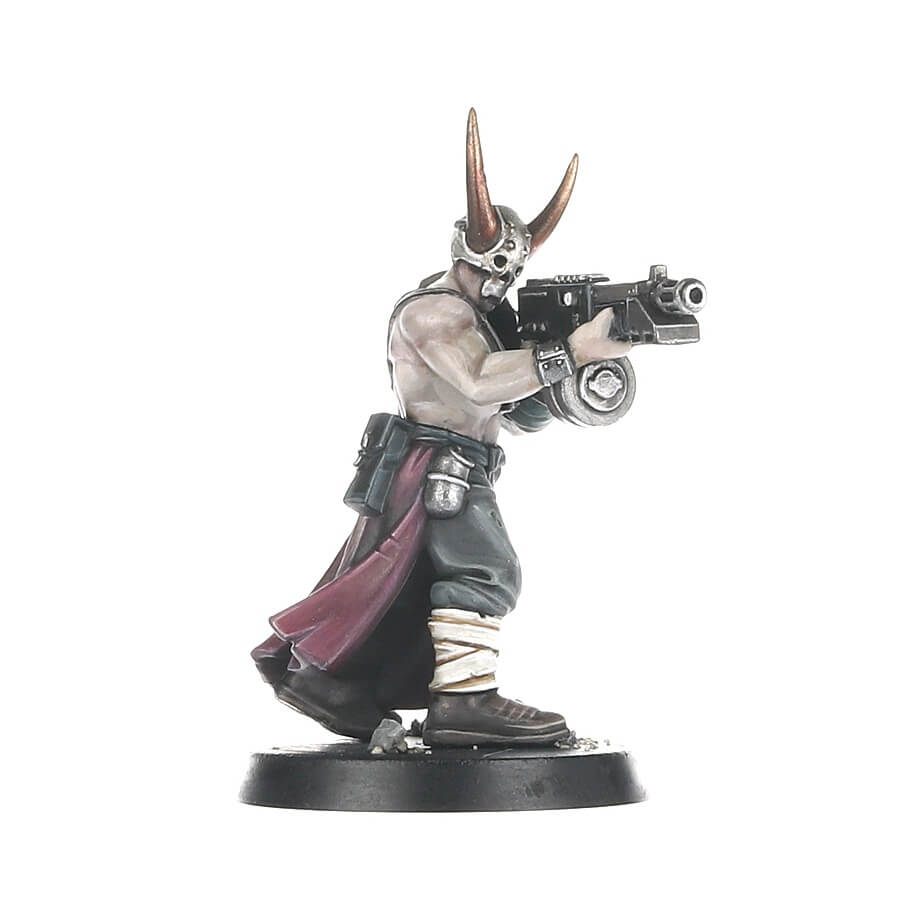
The Lost and the Damned is a faction in Warhammer 40,000 that represents the countless human followers of Chaos who do not belong to any of the specific Chaos factions. Its a horde-style faction, meaning they rely on large numbers of cheap units to overwhelm the enemy.
Their units are often weak individually but can be deadly in large numbers. To play this faction effectively, it’s important to use your units in combination to create an unstoppable wave of destruction.
It’s important to know that The Lost and the Damned do not have any unique characters or heroes, so to field an army you must use Chaos Space Marine characters and heroes as allies.
Dark Mechanicum
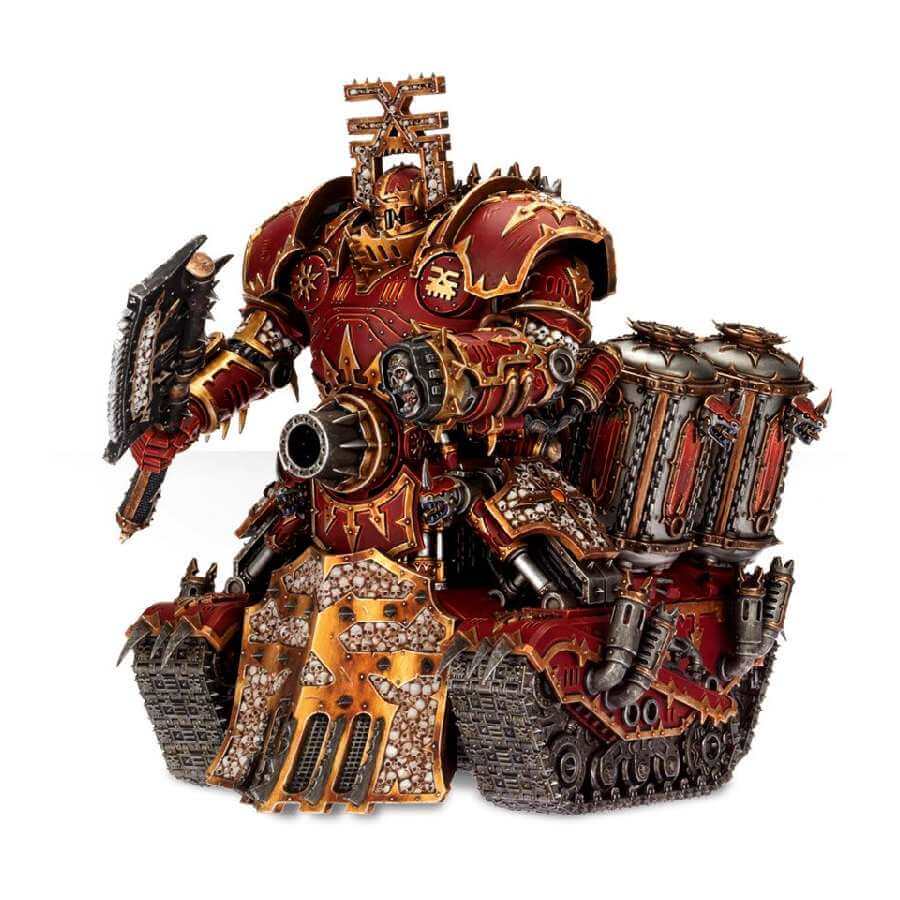
The Dark Mechanicum is made up of the tech-priests and engineers of the Imperium who have turned away from the Emperor’s light and embraced the Chaos Gods.
They use forbidden and dark technology to create twisted machines and weapons, and often make deals with daemons to further their goals.
The Dark Mechanicum is a powerful faction that relies heavily on their ability to use technology to their advantage. They have access to powerful war machines and vehicles that are both heavily armored and armed with deadly weaponry.
When playing as the Dark Mechanicum, it is important to focus on your technological advantages and use your psykers to control the battlefield.
The Inquisition
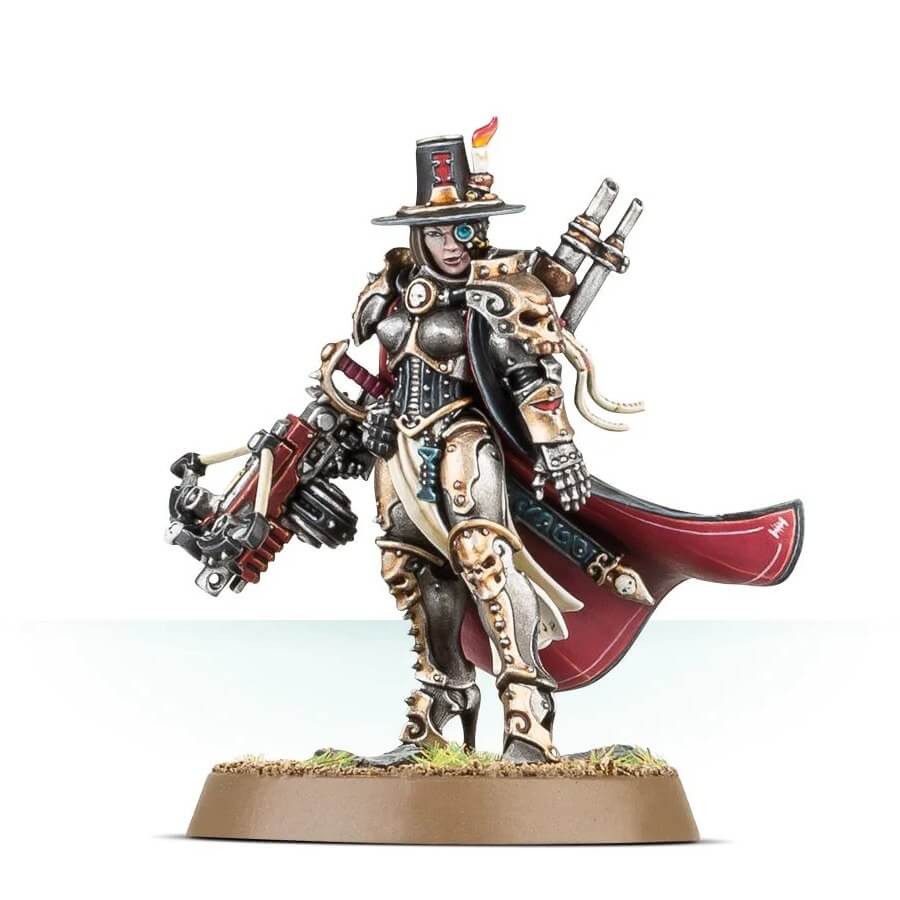
The Inquisition is a powerful and secretive organization, tasked with protecting humanity from the myriad threats it faces: heretics, mutants, xenos, and daemons.
The Inquisitors are the judges and executioners, operating above the law to root out any threat to mankind, no matter how hidden or insidious.
They are divided into several Ordo Majoris, the most notable being Ordo Hereticus, Ordo Xenos, and Ordo Malleus, each specializing in combating particular types of threats.
Inquisitors have almost unlimited authority, and with their retinues of warriors, psykers, and savants, they travel the galaxy seeking out and destroying anything that threatens the Imperium’s stability.
Each Inquisitor is a unique individual, shaped by years of deadly missions and encounters with the darkest terrors of the galaxy, making them one of the most feared and respected figures in the Warhammer 40K universe.
How to play Inquision on the Tabletop
The Inquisition doesn’t typically function as a standalone army but rather as a force that can be added to other Imperial armies.
Inquisitors can be incredibly diverse in their loadouts and abilities, reflecting their personal nature and varied specialties.
They can be psychic powerhouses, master interrogators, or deadly combatants. They often come with a retinue of unique and powerful acolytes and warriors, such as Crusaders, Death Cult Assassins, or Daemonhosts, each bringing their own special abilities and tools to the battlefield.
Recap on Warhammer 40K Factions and Armies
Feeling exhausted? It’s normal! But remember there’s no rush!
Researching each Warhammer 40K faction can be a great way for you to start learning about the game and its setting, and to find a faction that matches your preferences and playstyle.
Reading the in-depth guides around each army will ultimately help you:
- Get more familiar with the game setting: Warhammer 40,000 has a rich and complex setting, with multiple factions vying for power in a dark and grim future. By researching each faction, a beginner can become familiar with the various races, their motivations, and their role in the setting.
- Understand the gameplay: Each faction has its unique strengths and weaknesses, playstyle, and available units. By researching each faction, a beginner can get a good understanding of what each faction is good at, and how to counter their strengths.
- Choose a faction: Warhammer 40,000 offers a wide range of factions to choose from, and it can be overwhelming for a beginner to choose one. Researching each faction can help a beginner narrow down their options and find a faction that matches their playstyle and preferences.
- Know the lore and background: Warhammer 40,000 has a deep and rich lore, and each faction has a unique backstory and history. By researching each faction, a beginner can delve into the lore of the game, which can enhance their appreciation of the setting and make the game more immersive.

